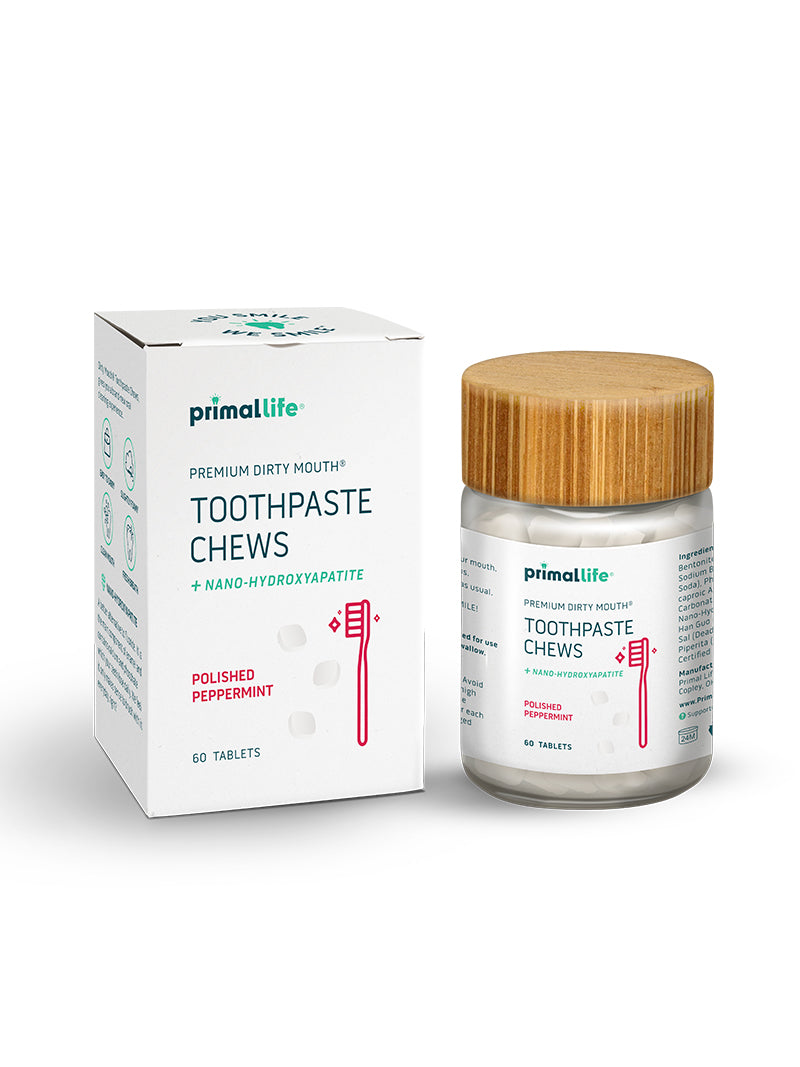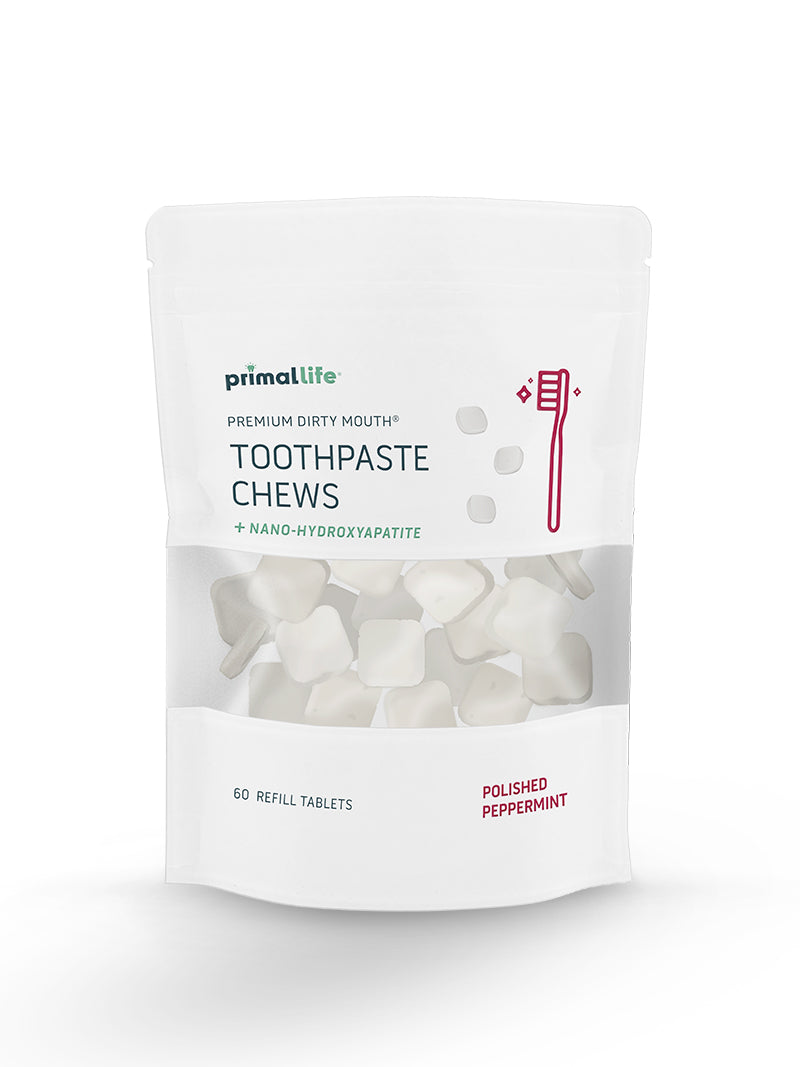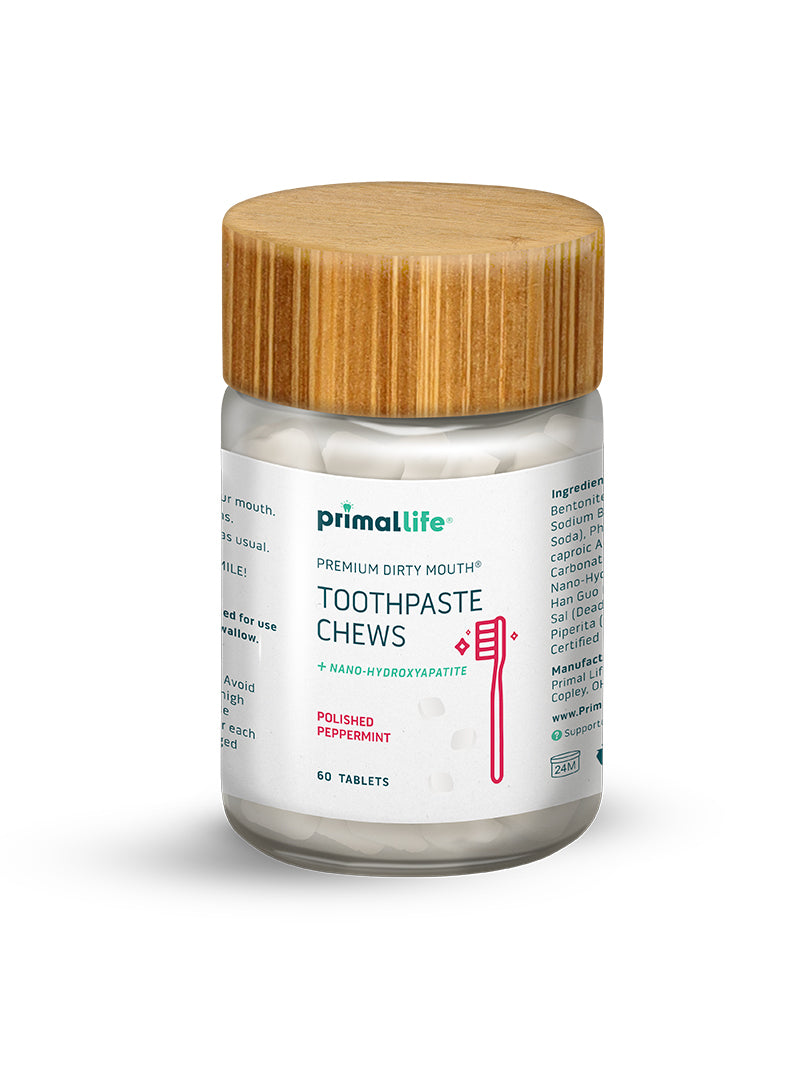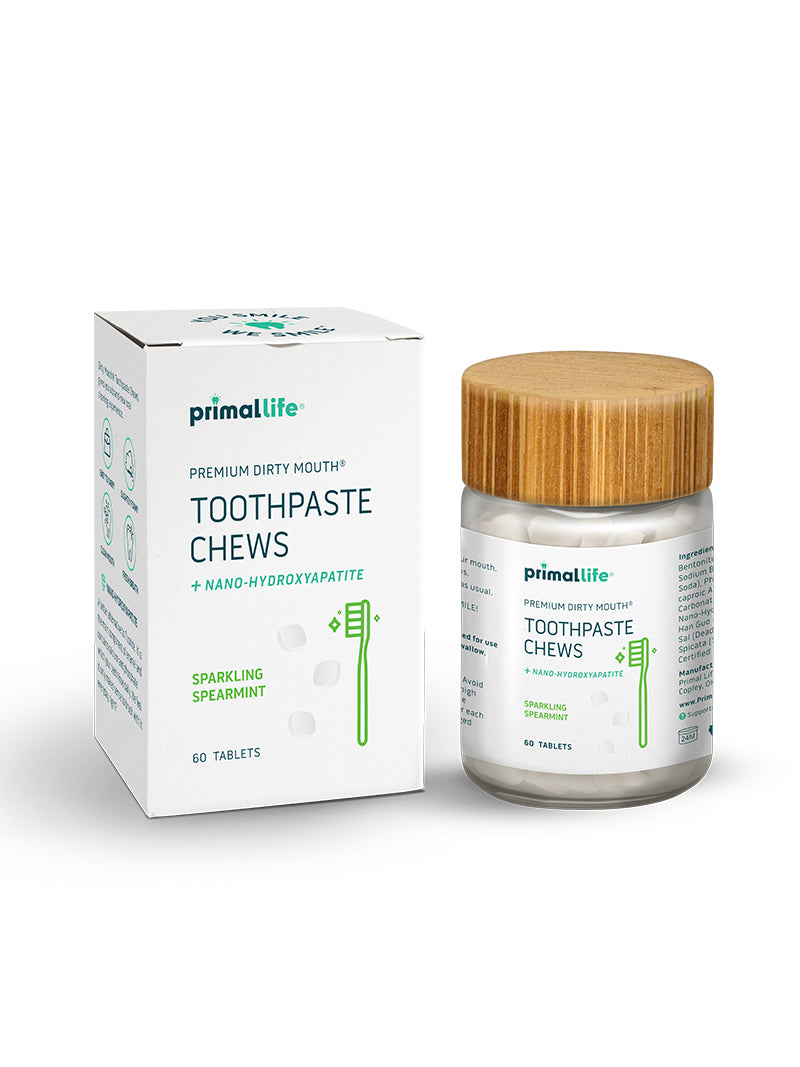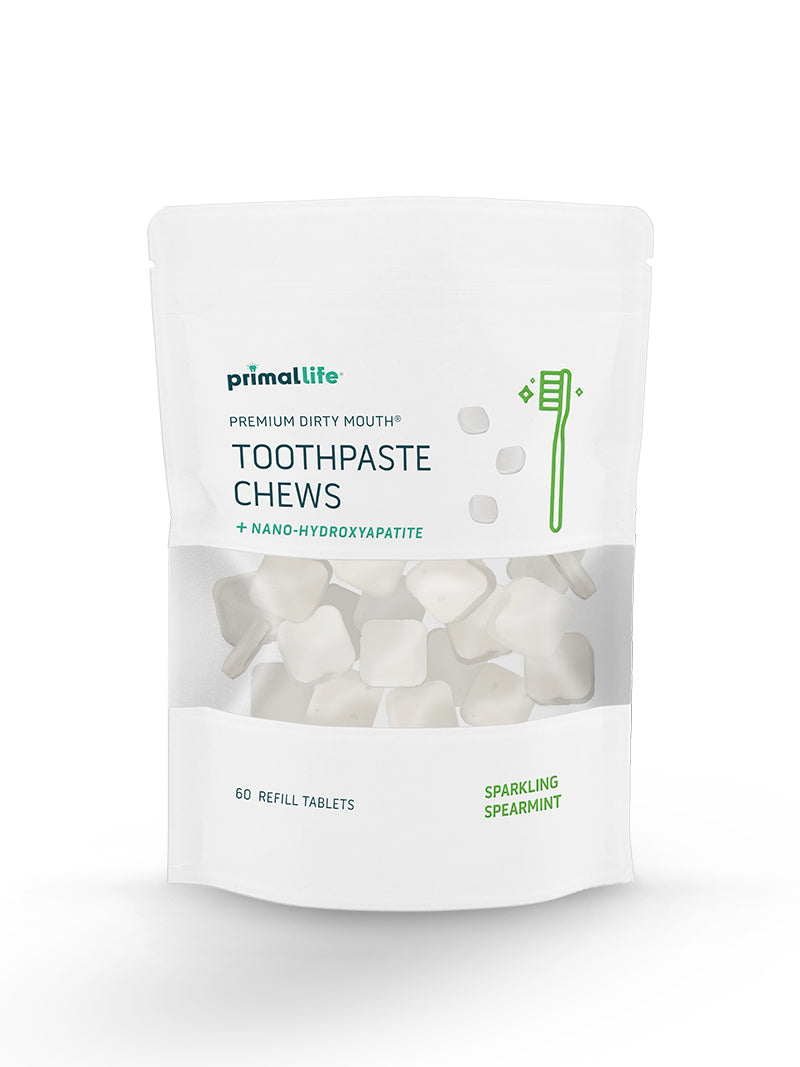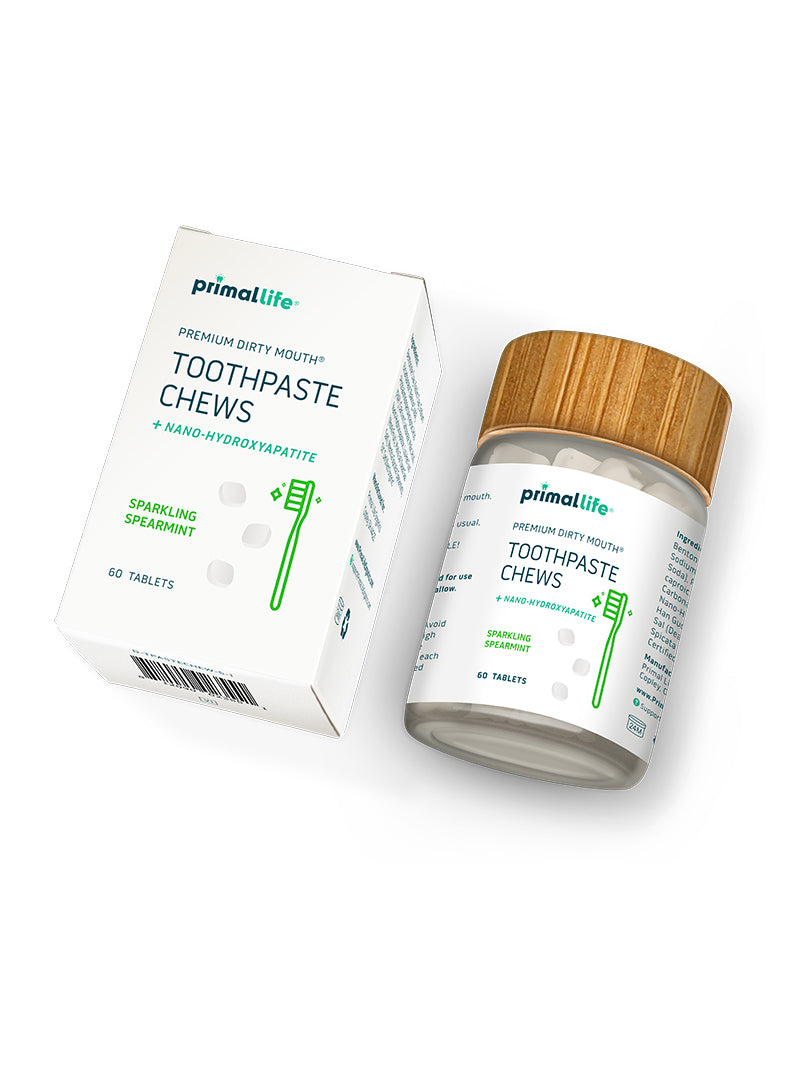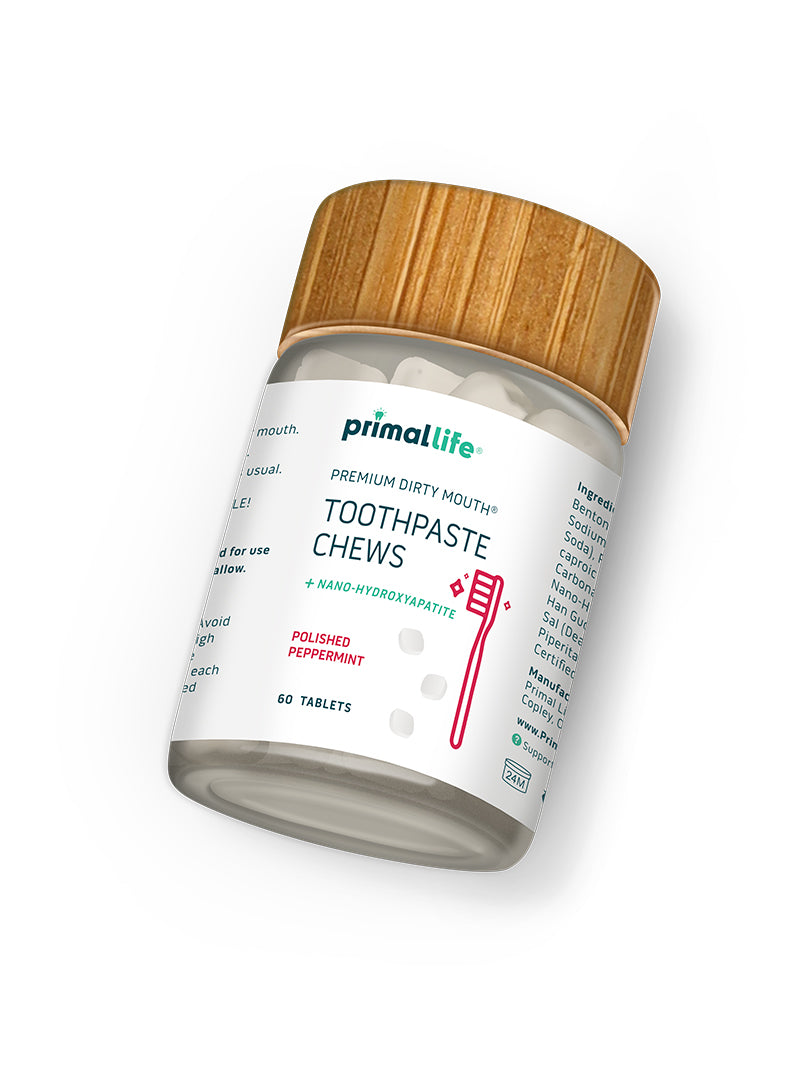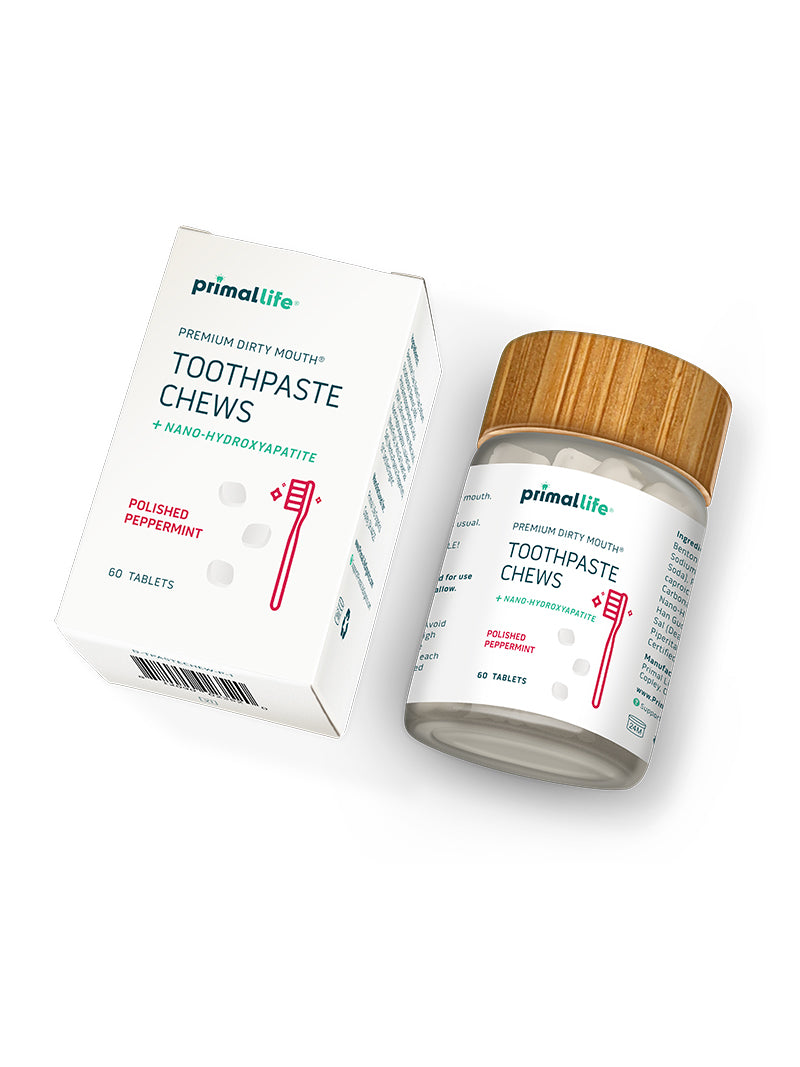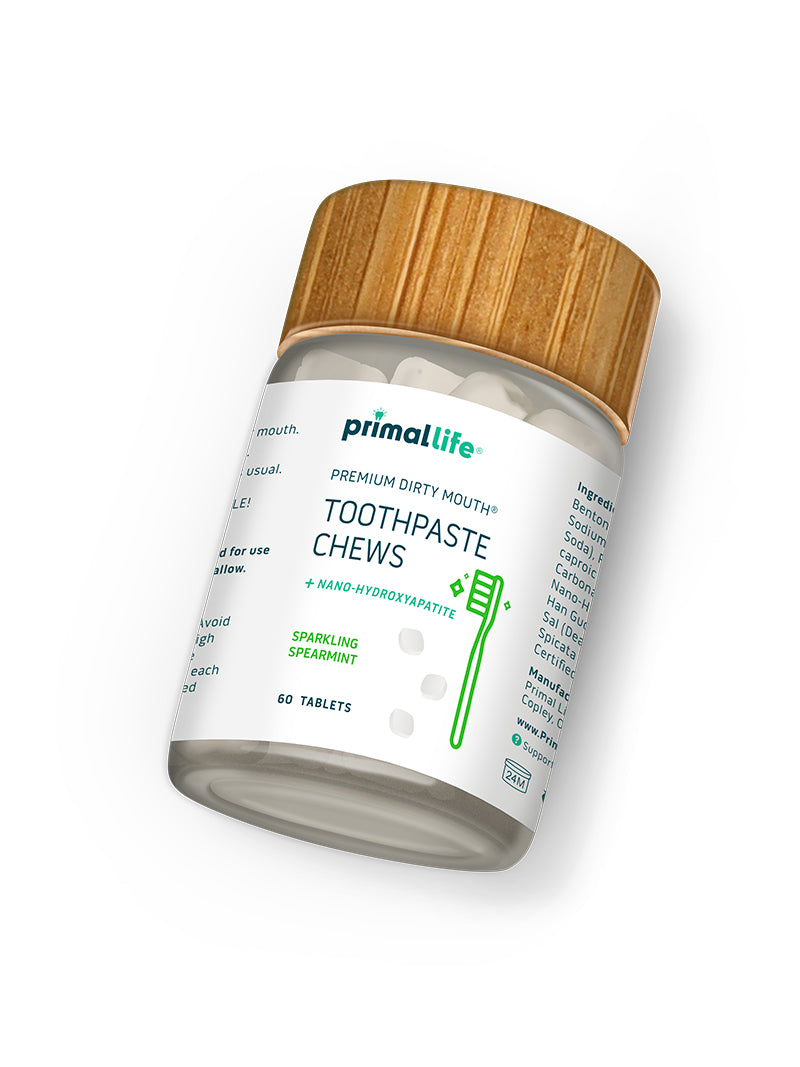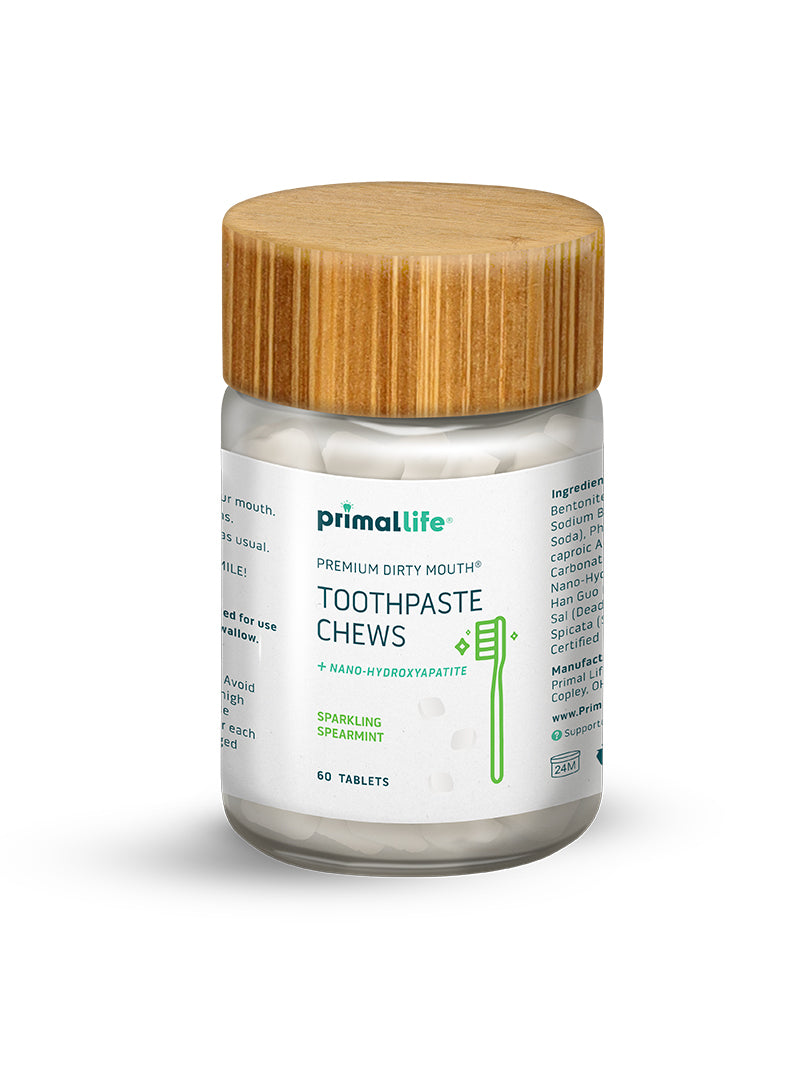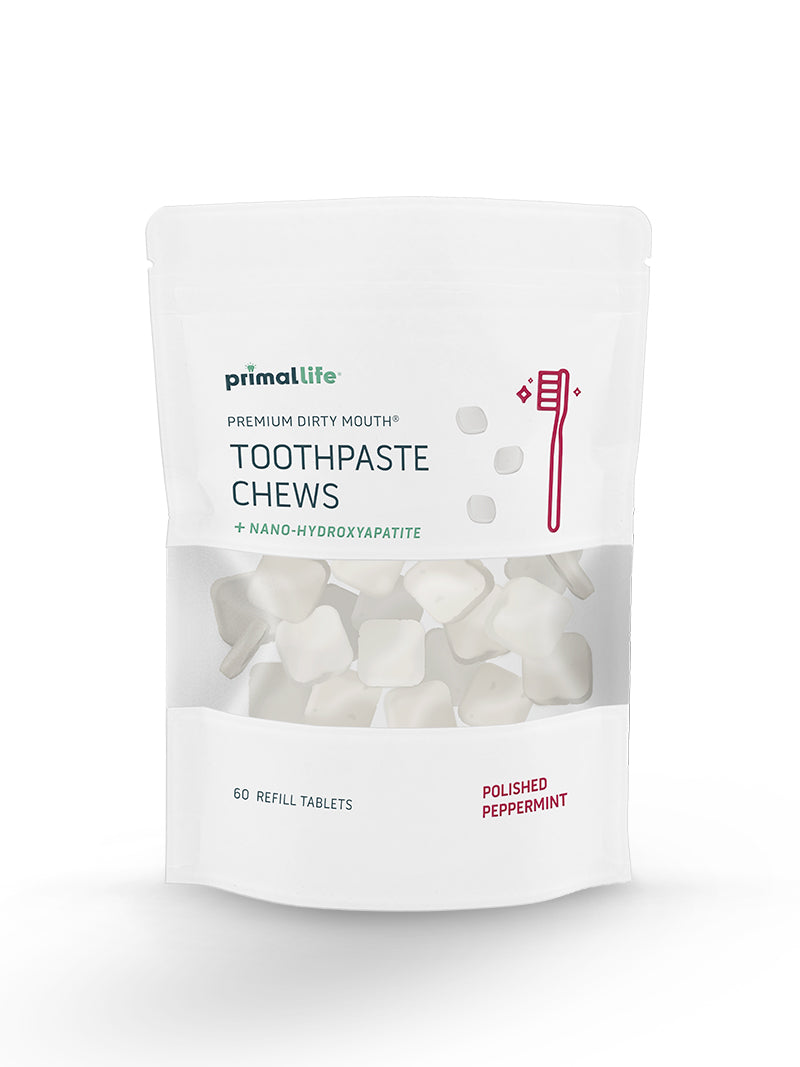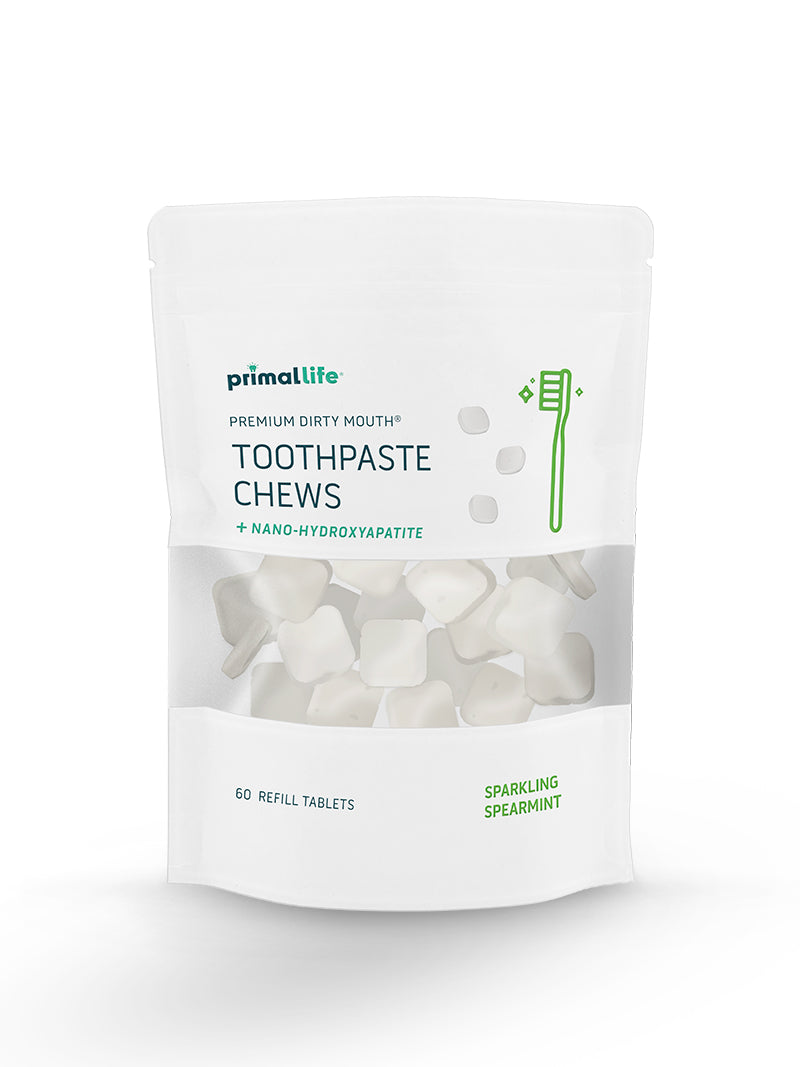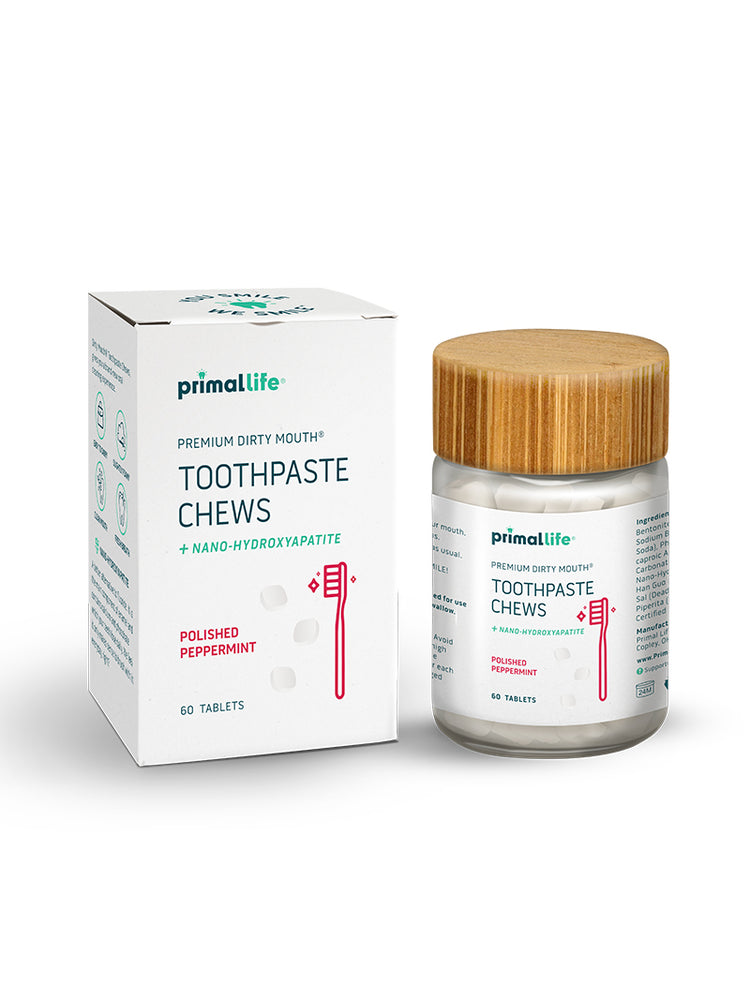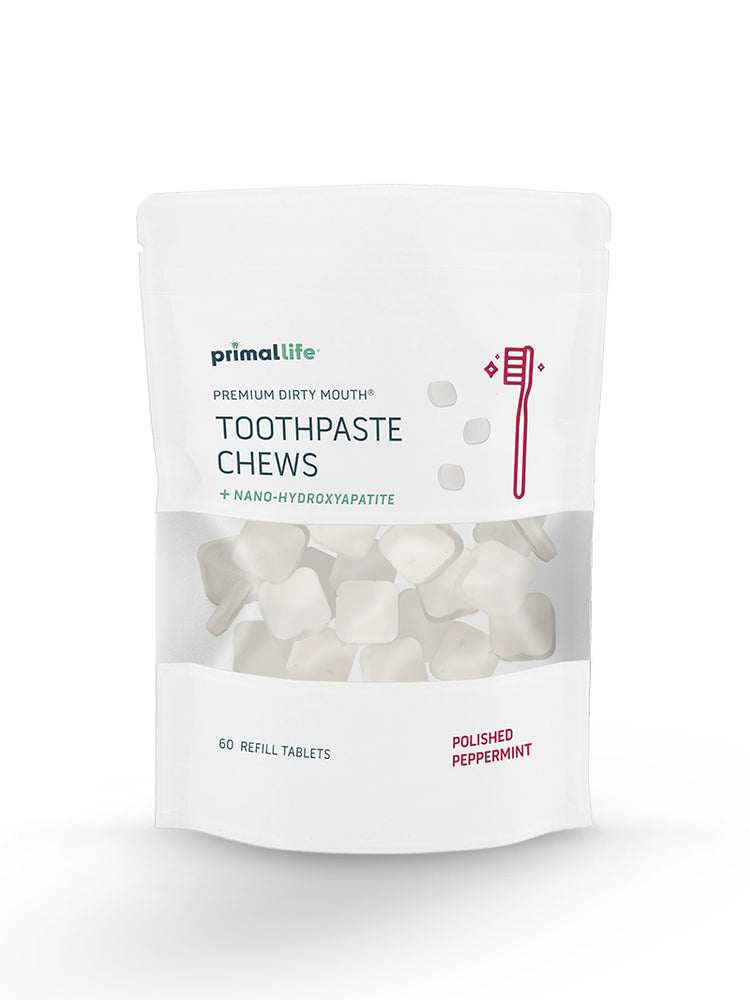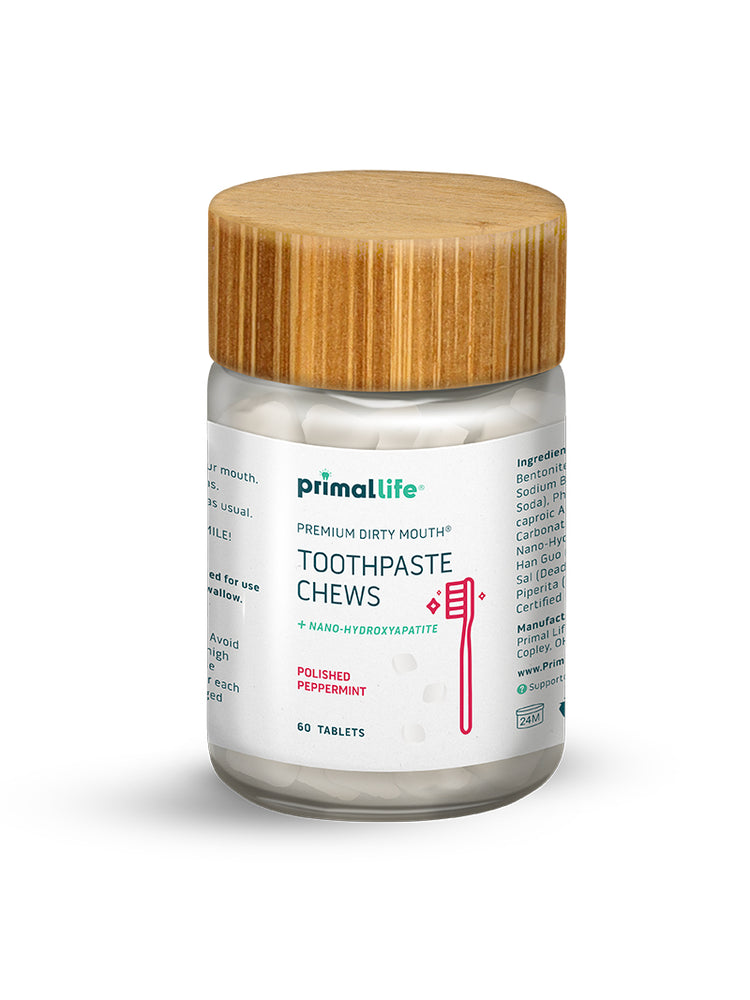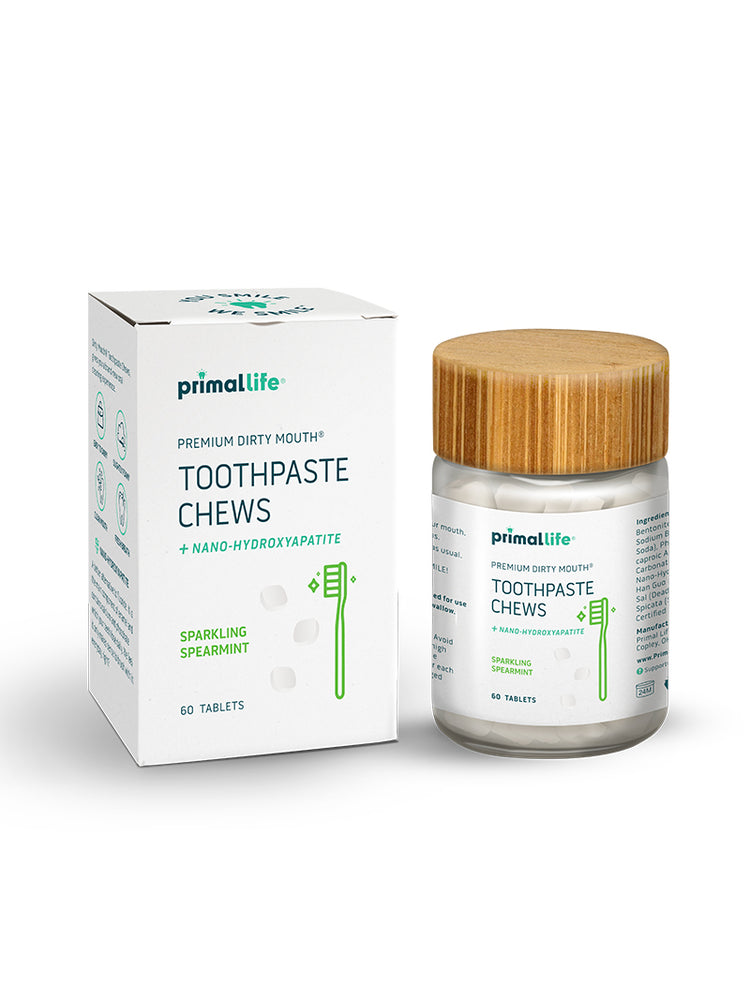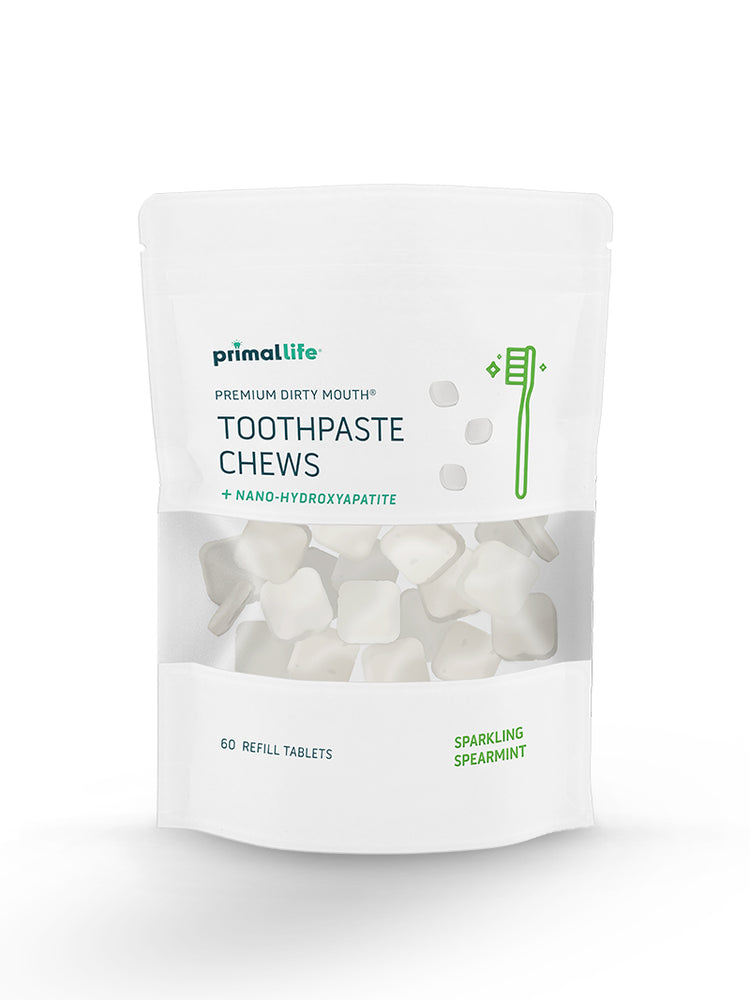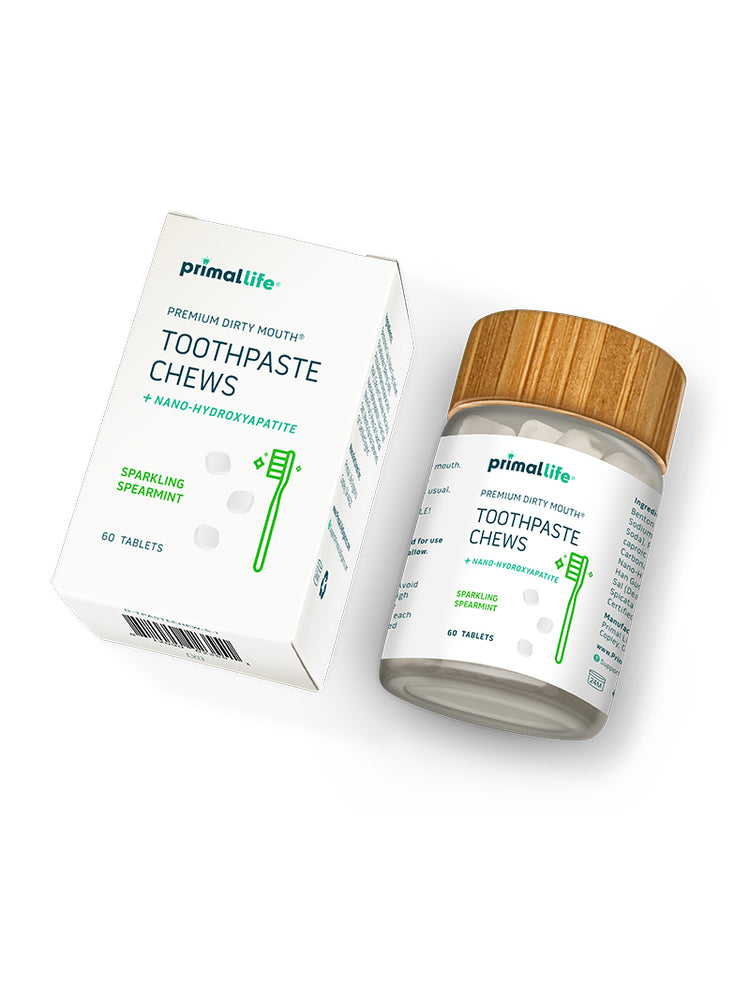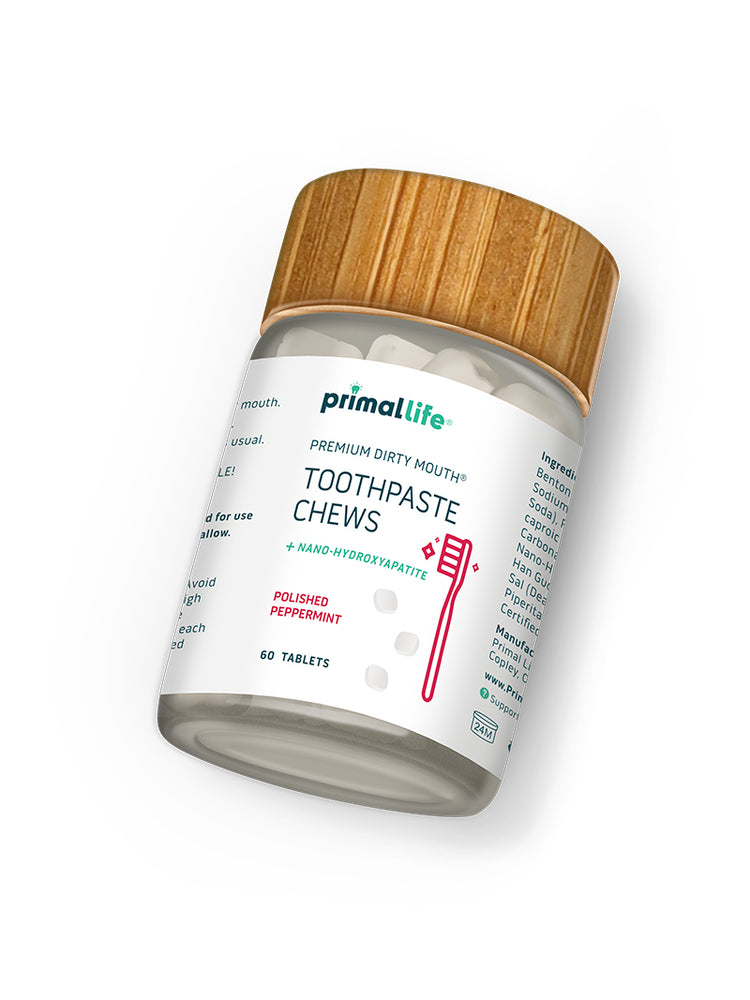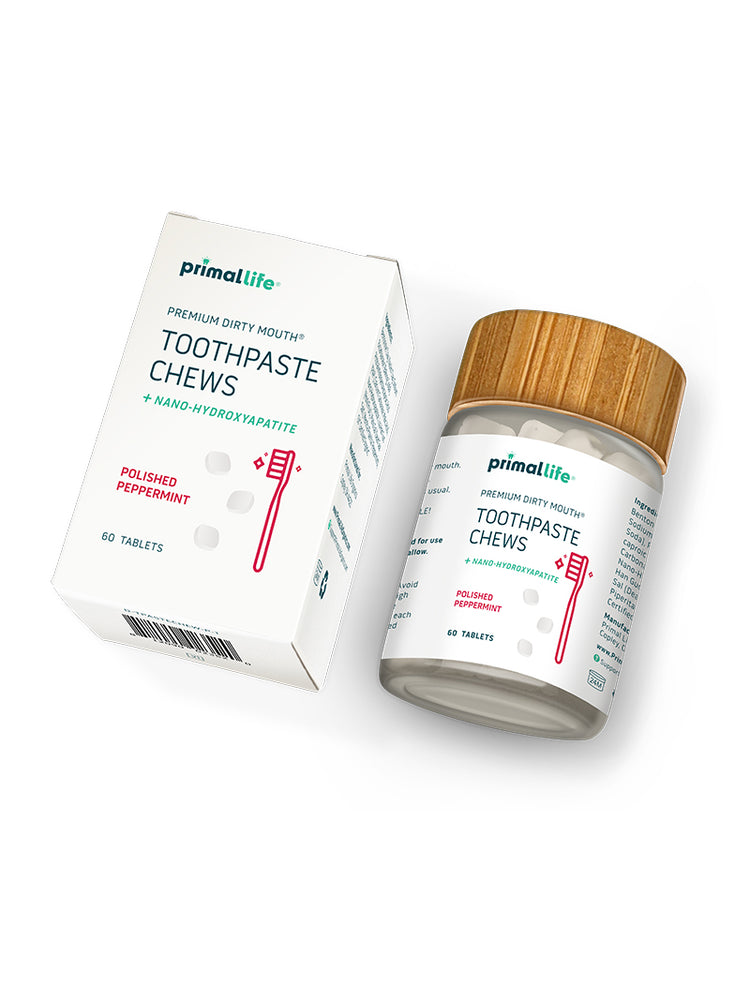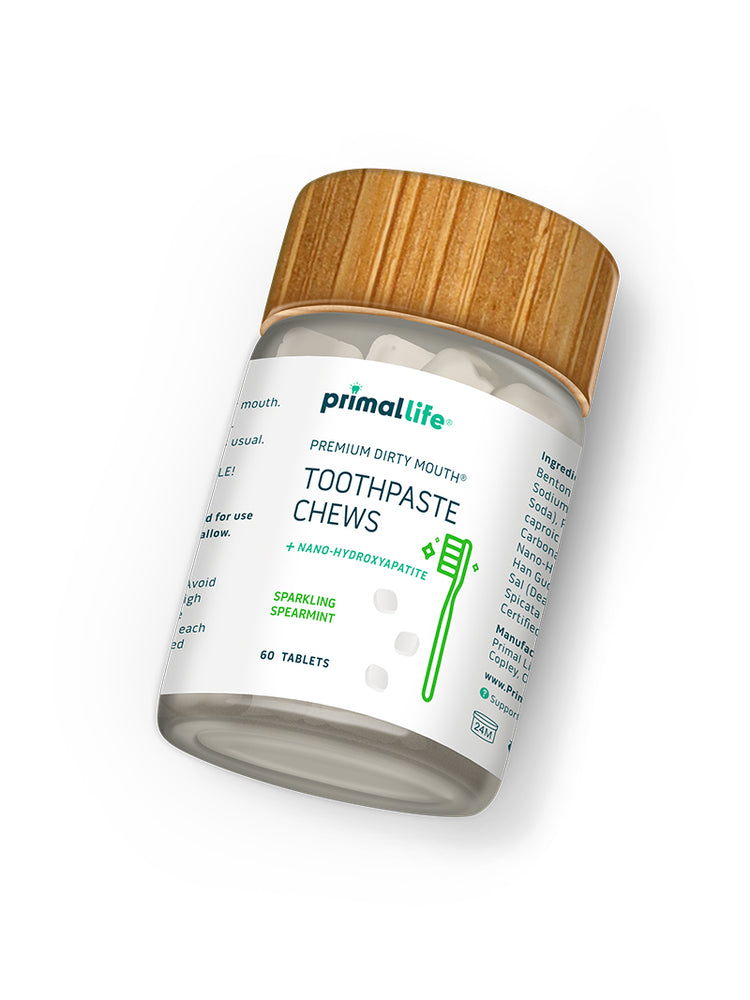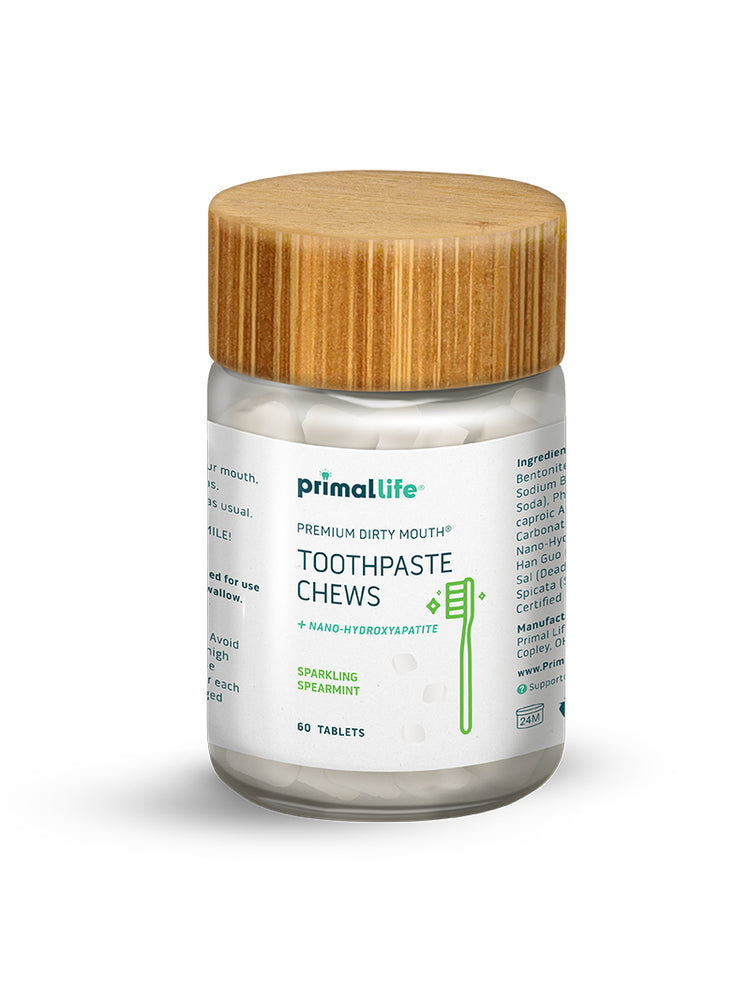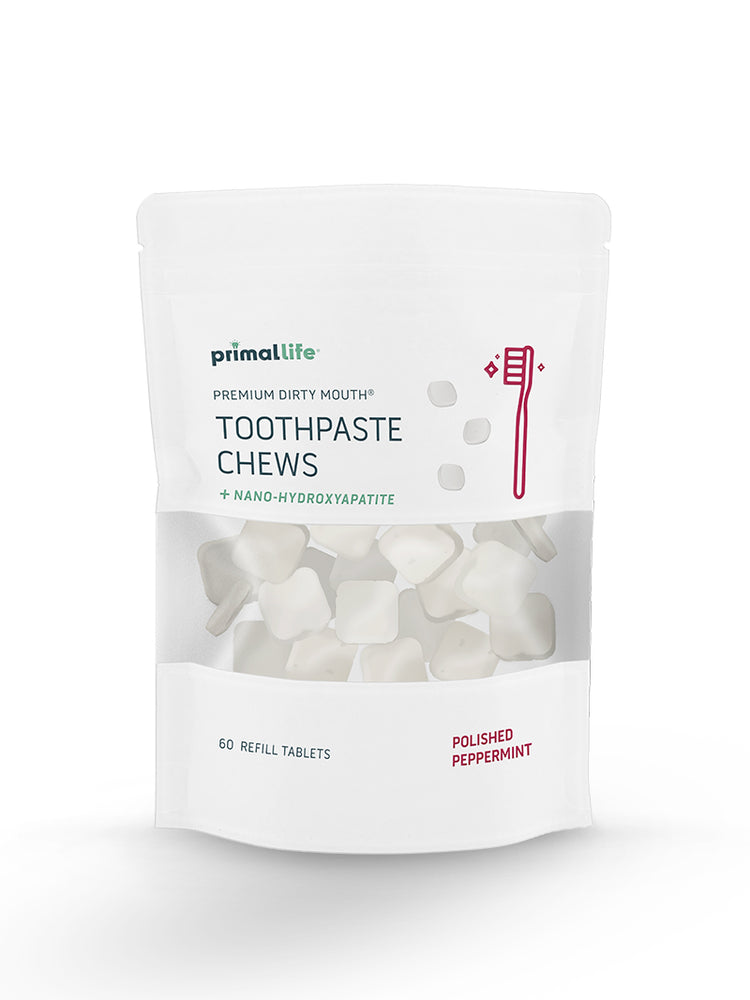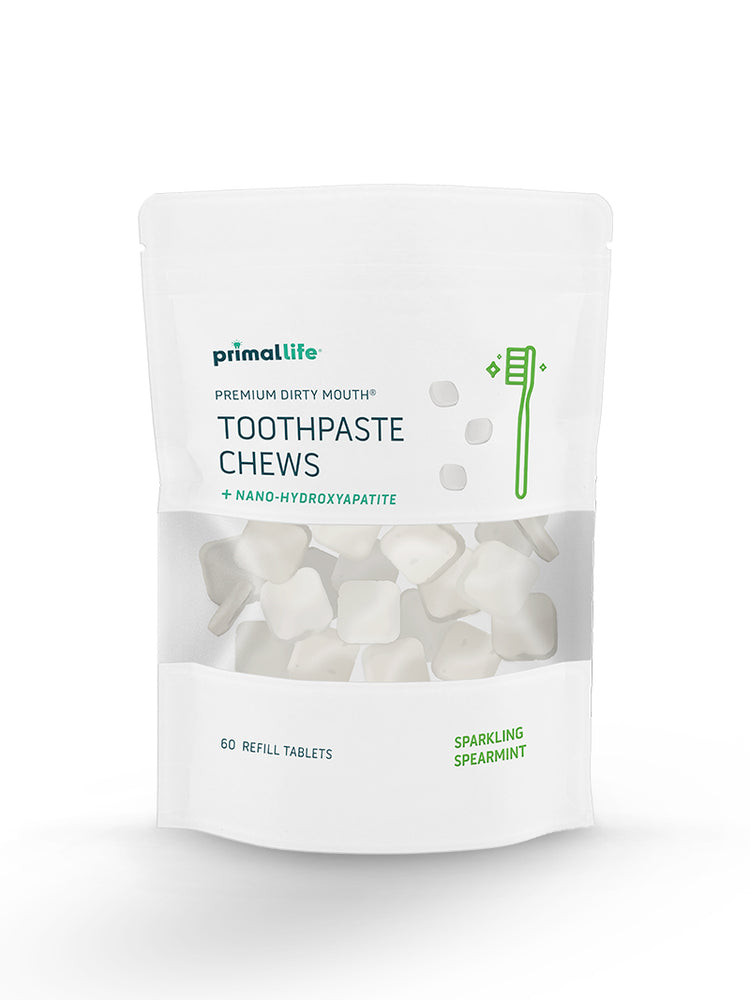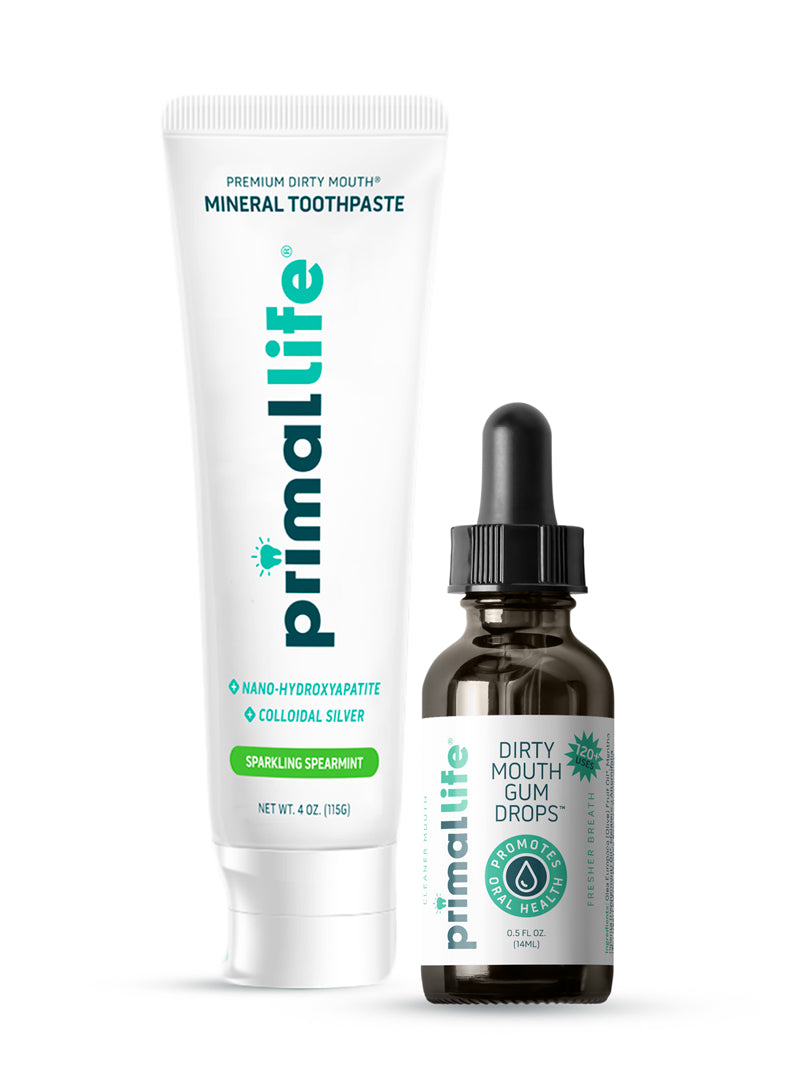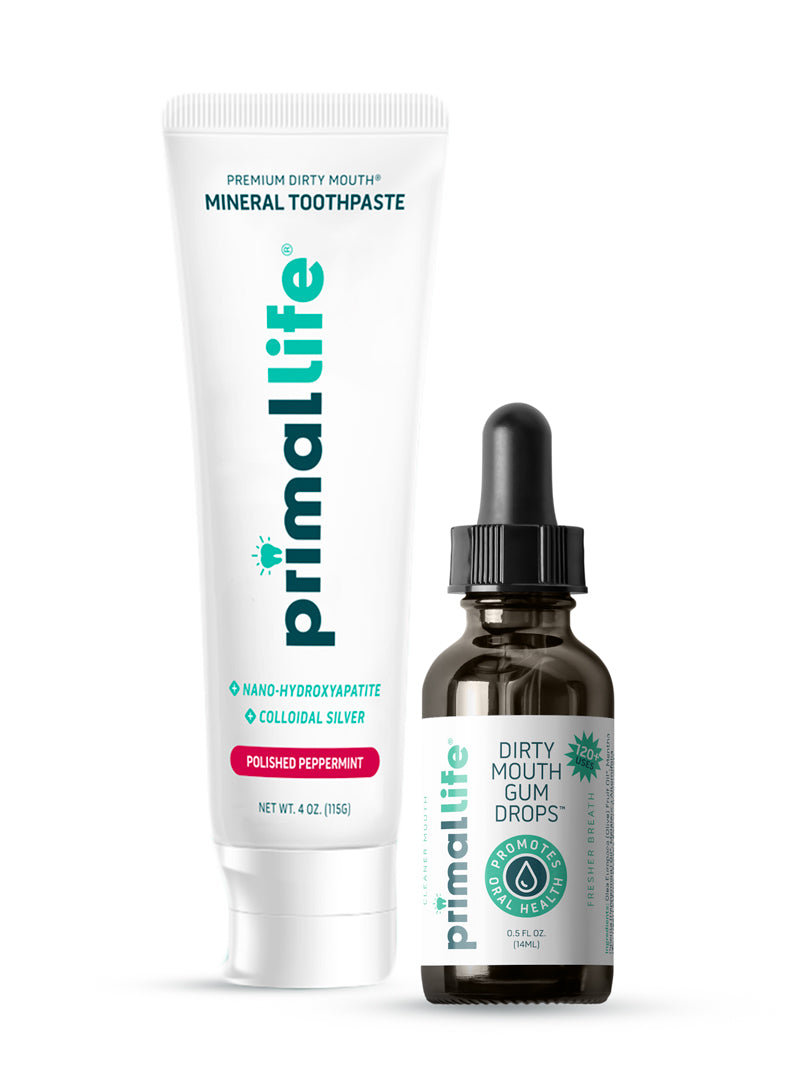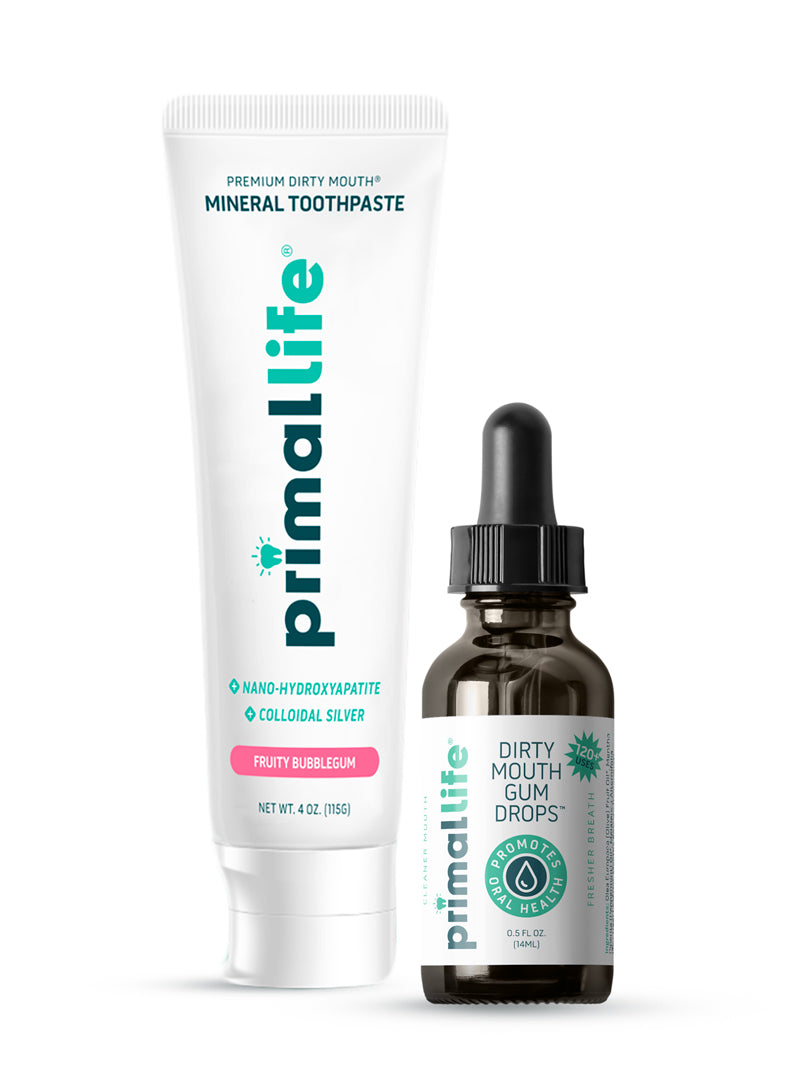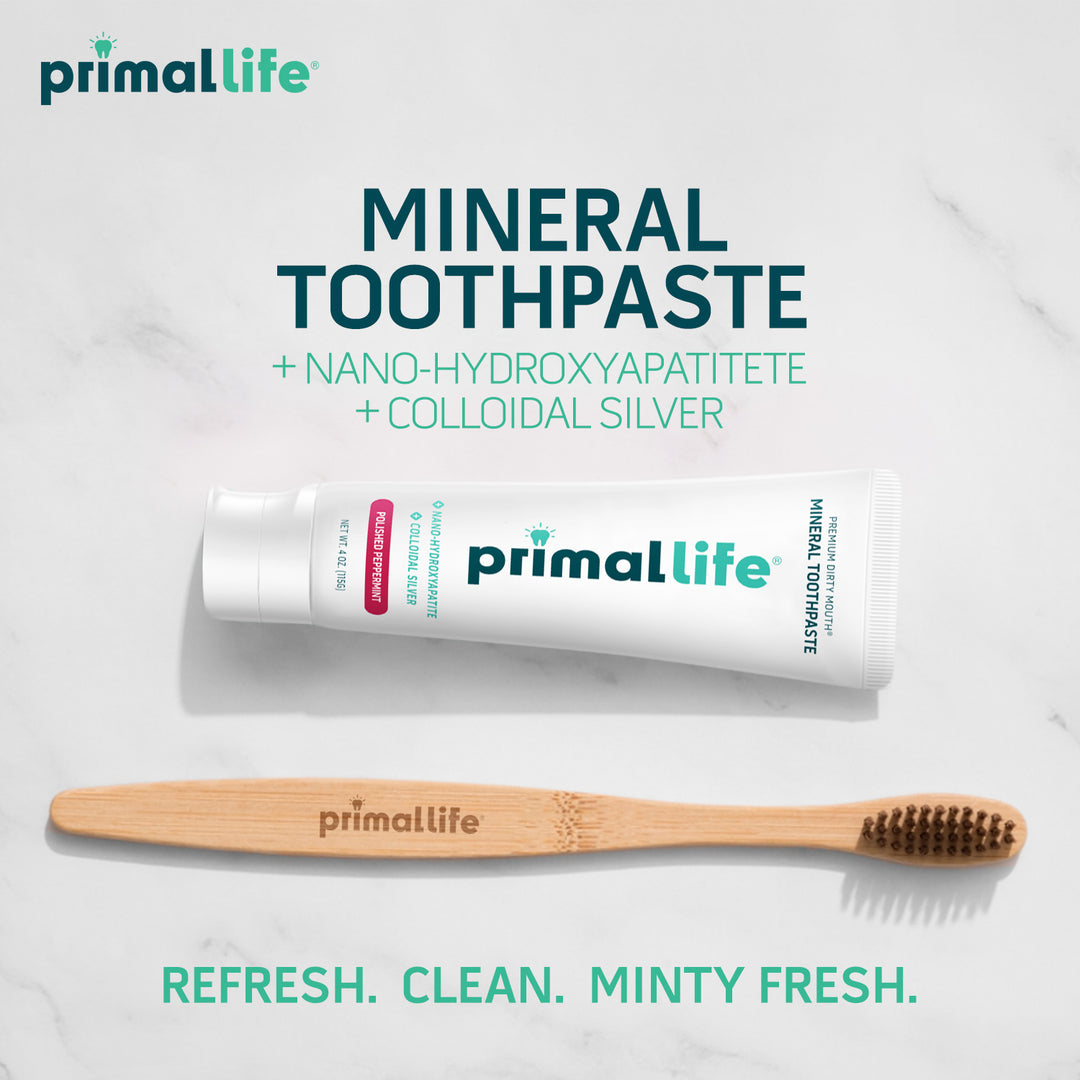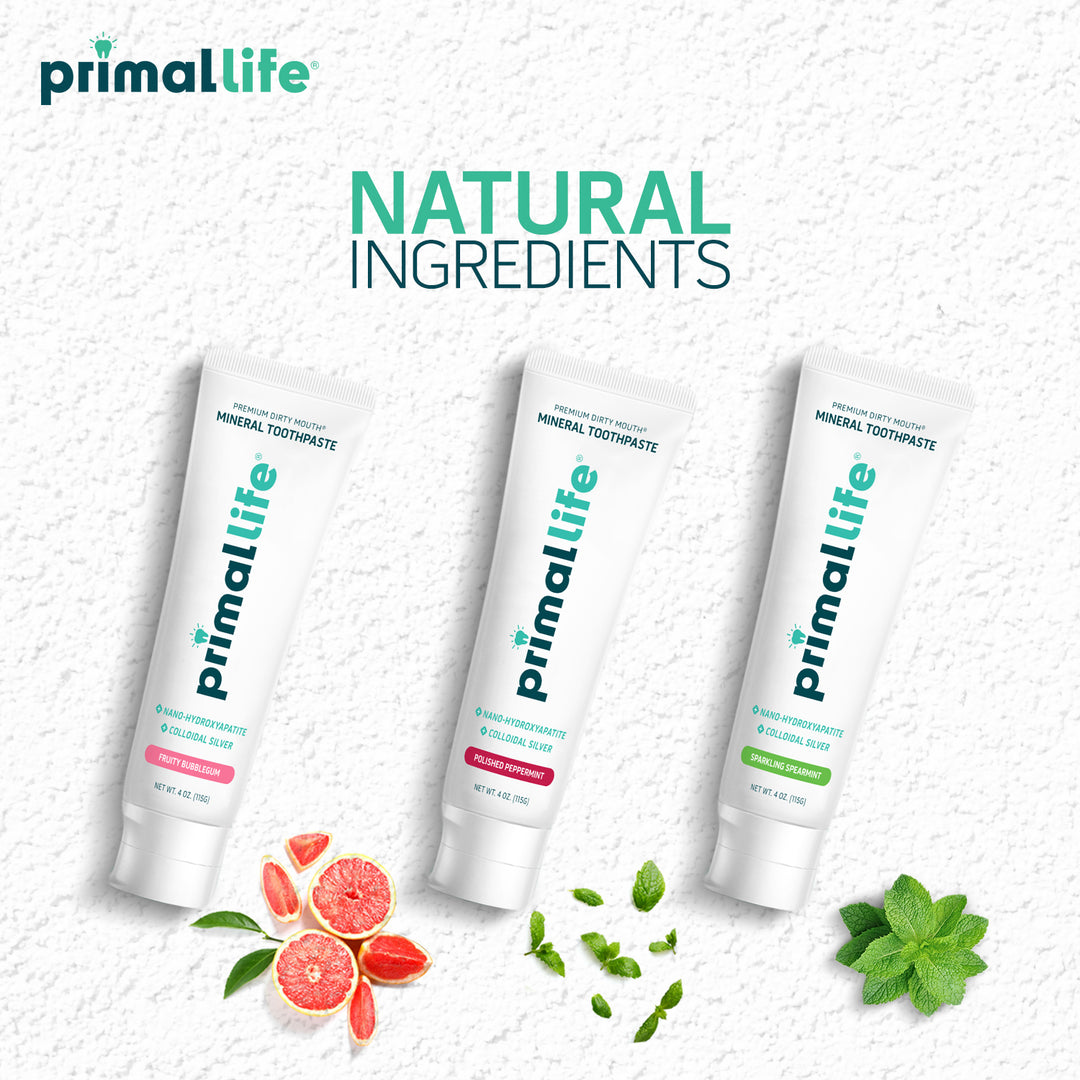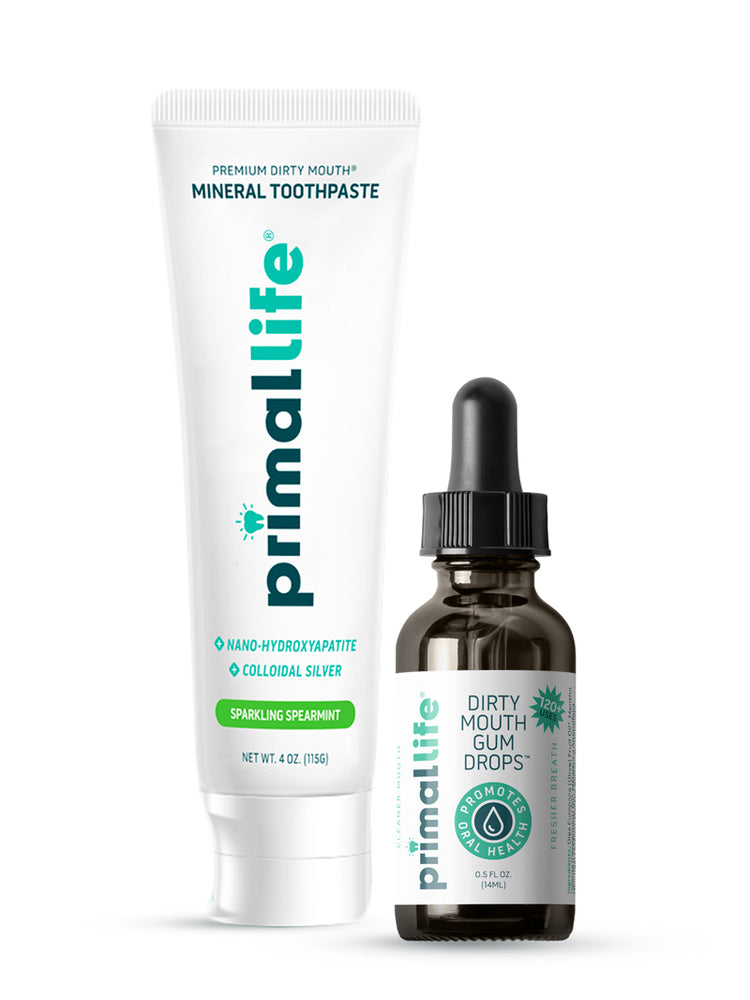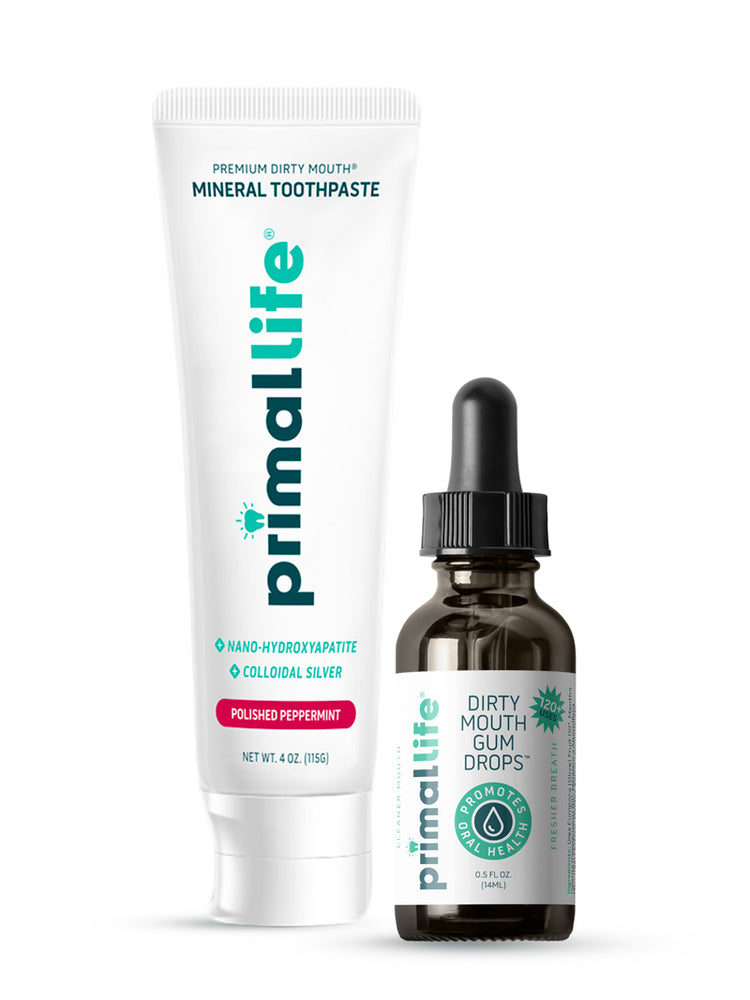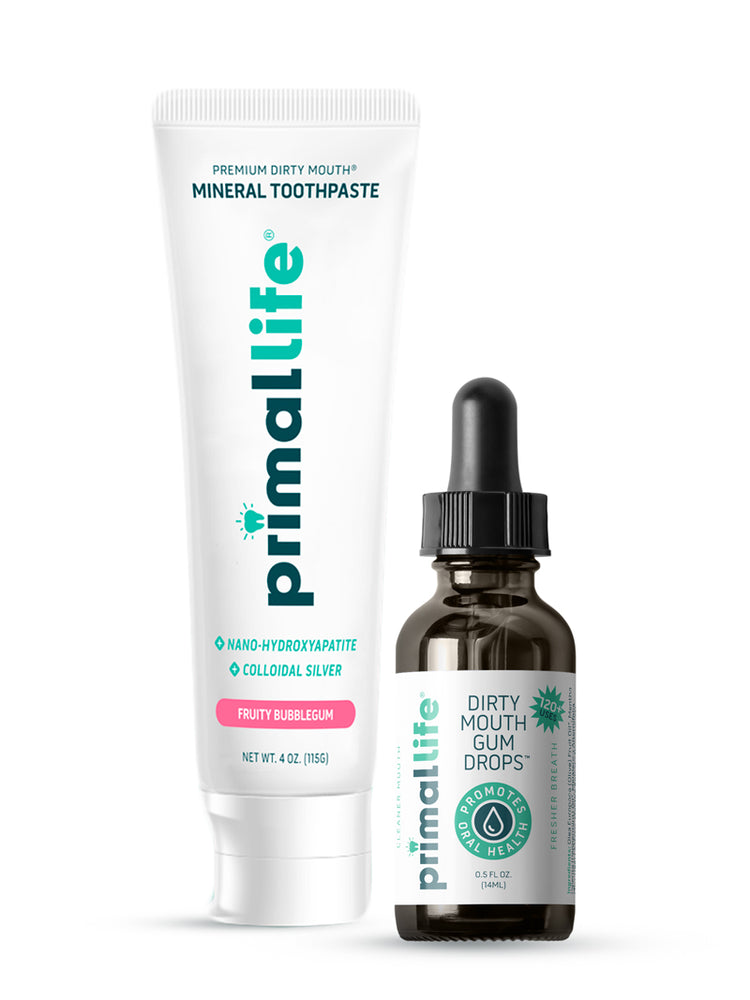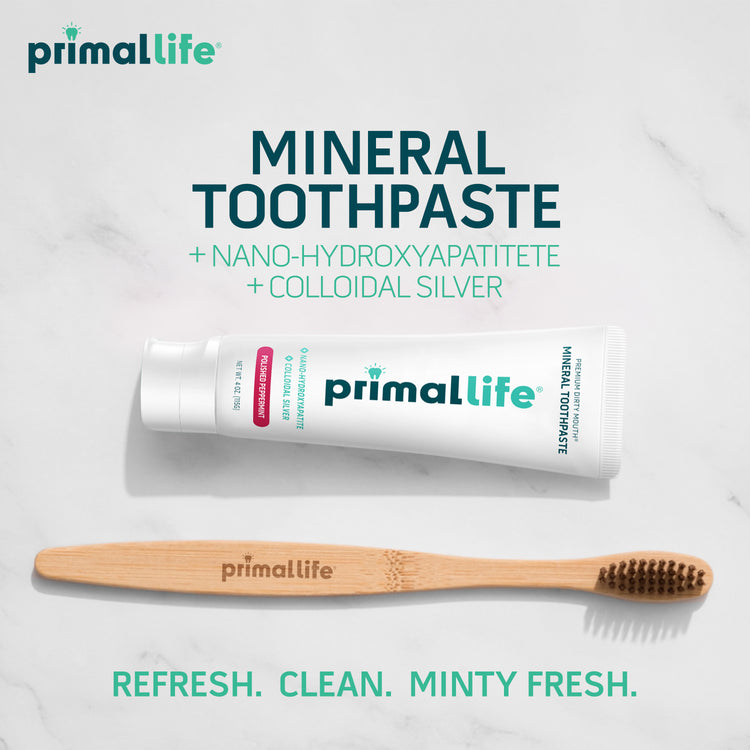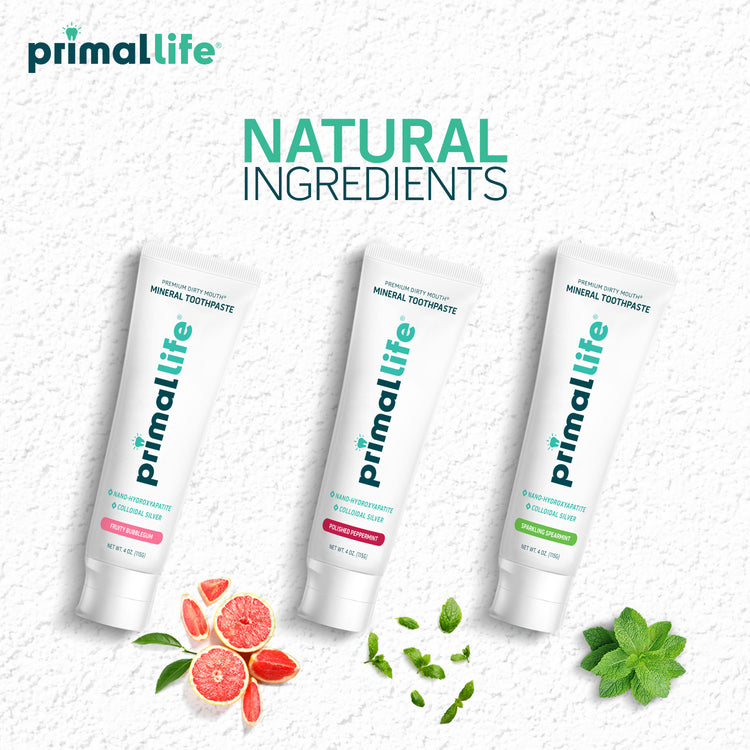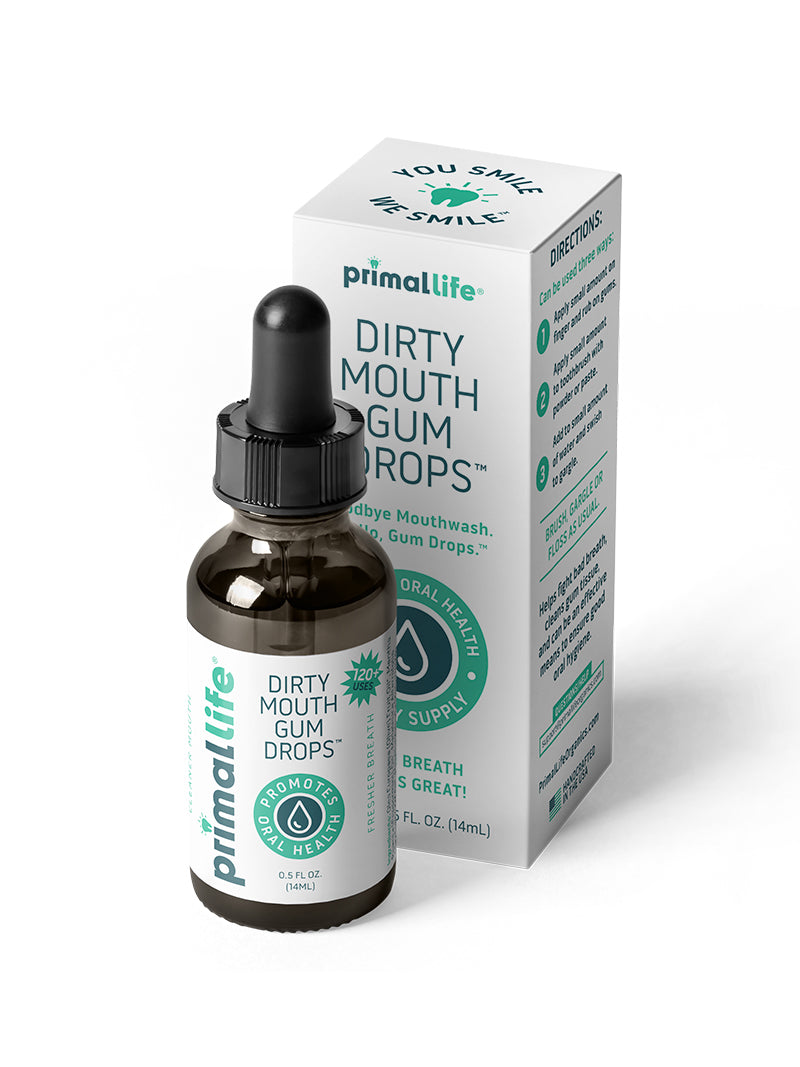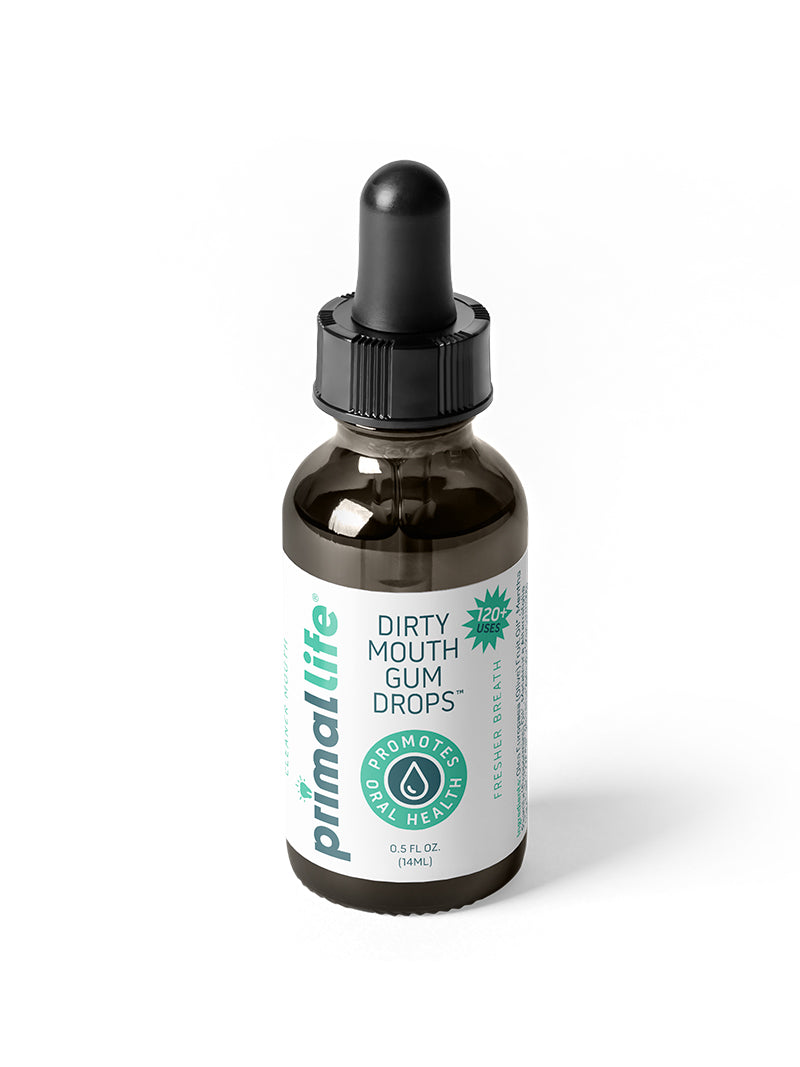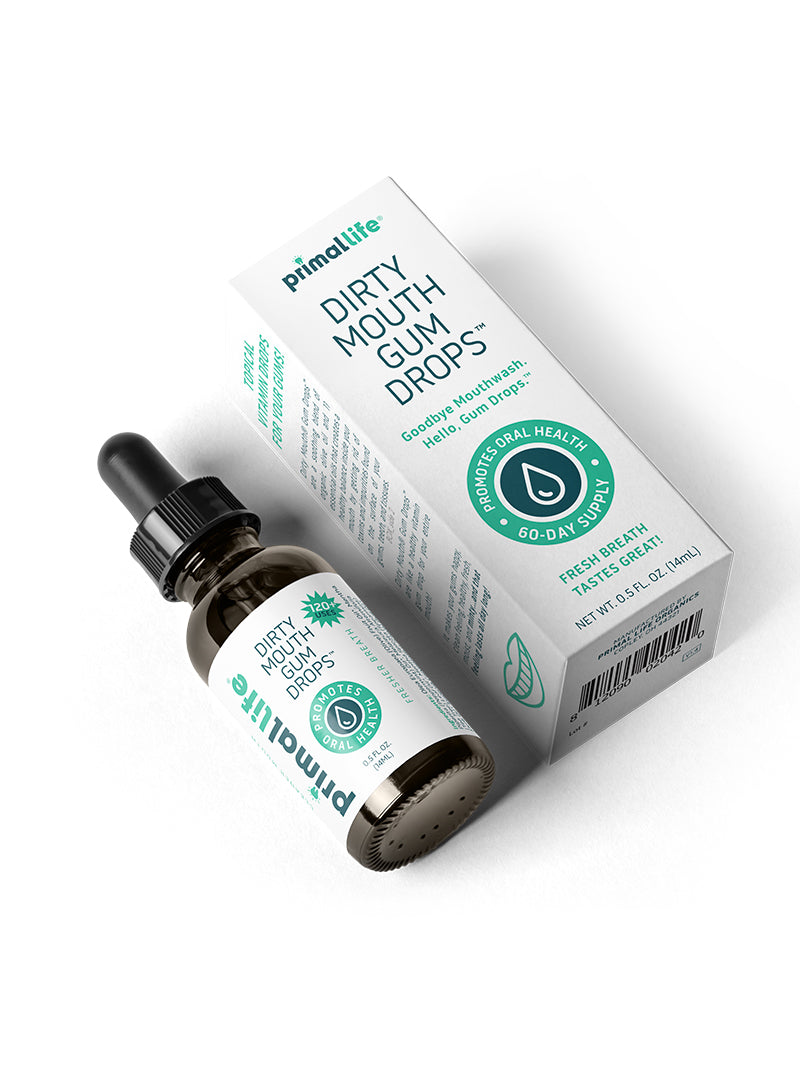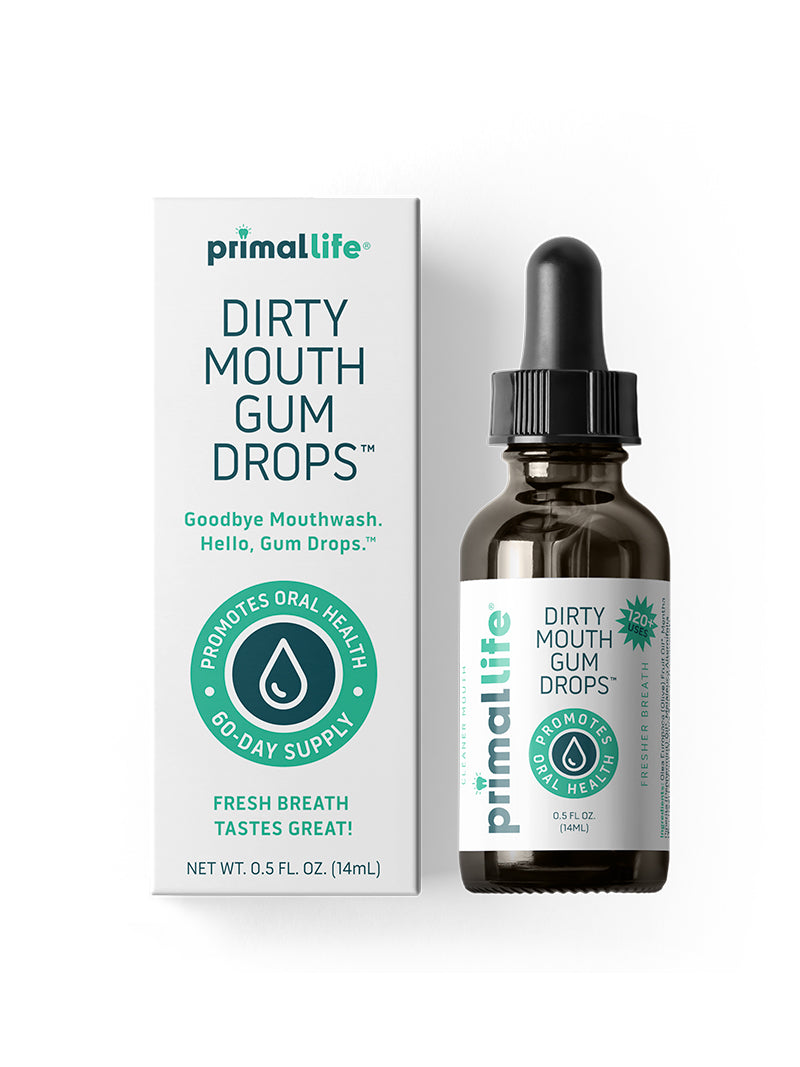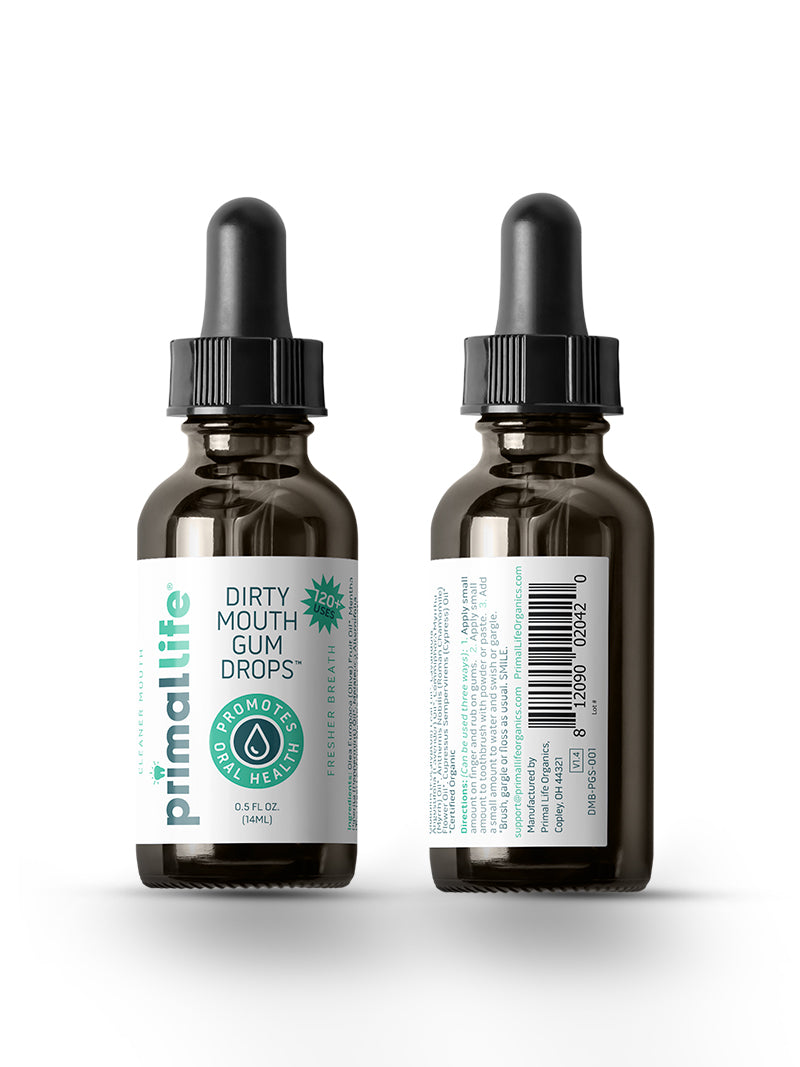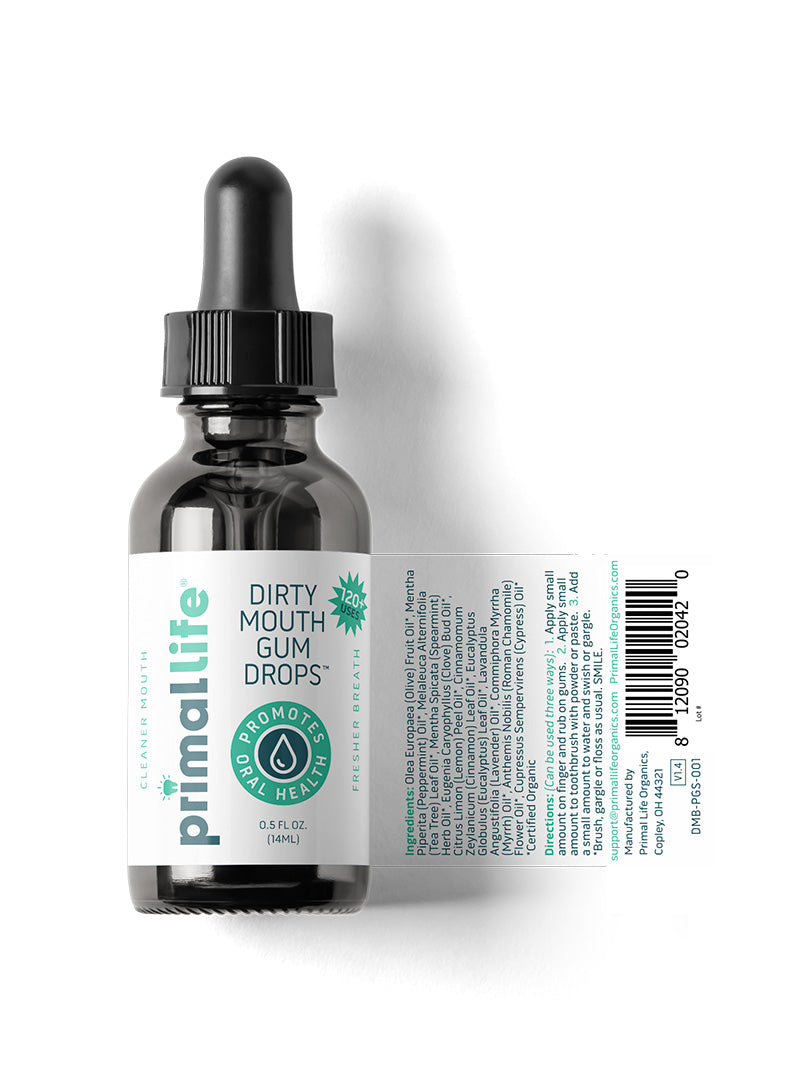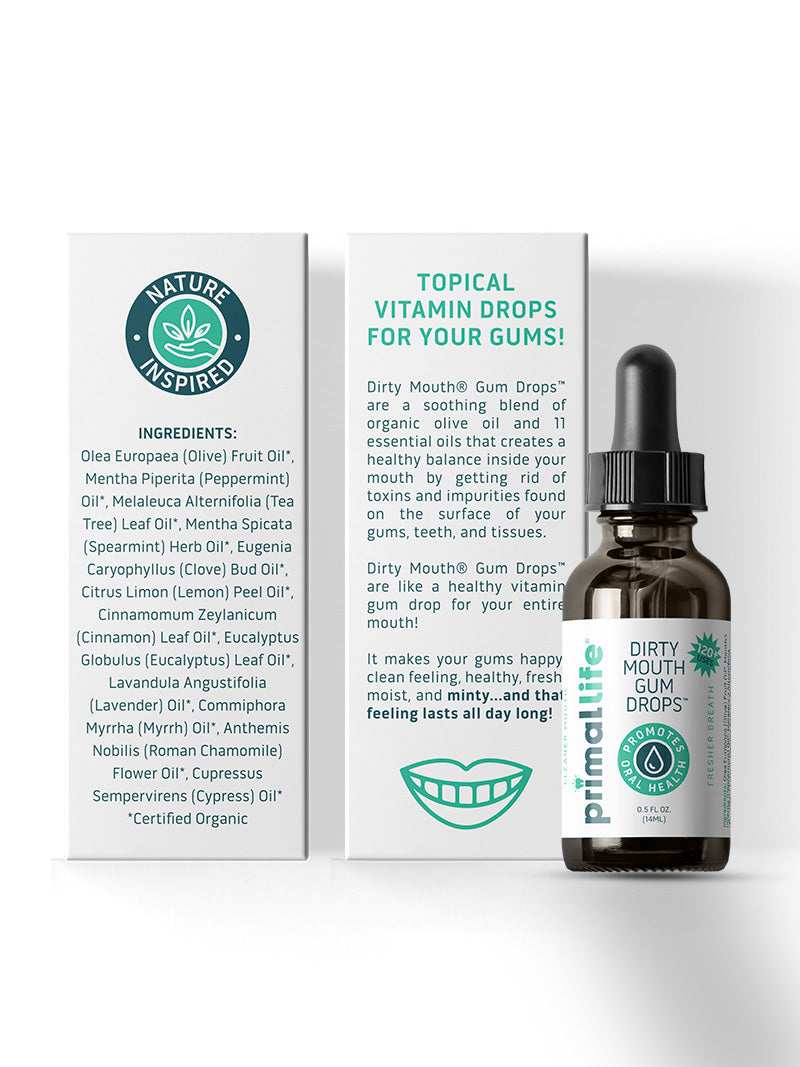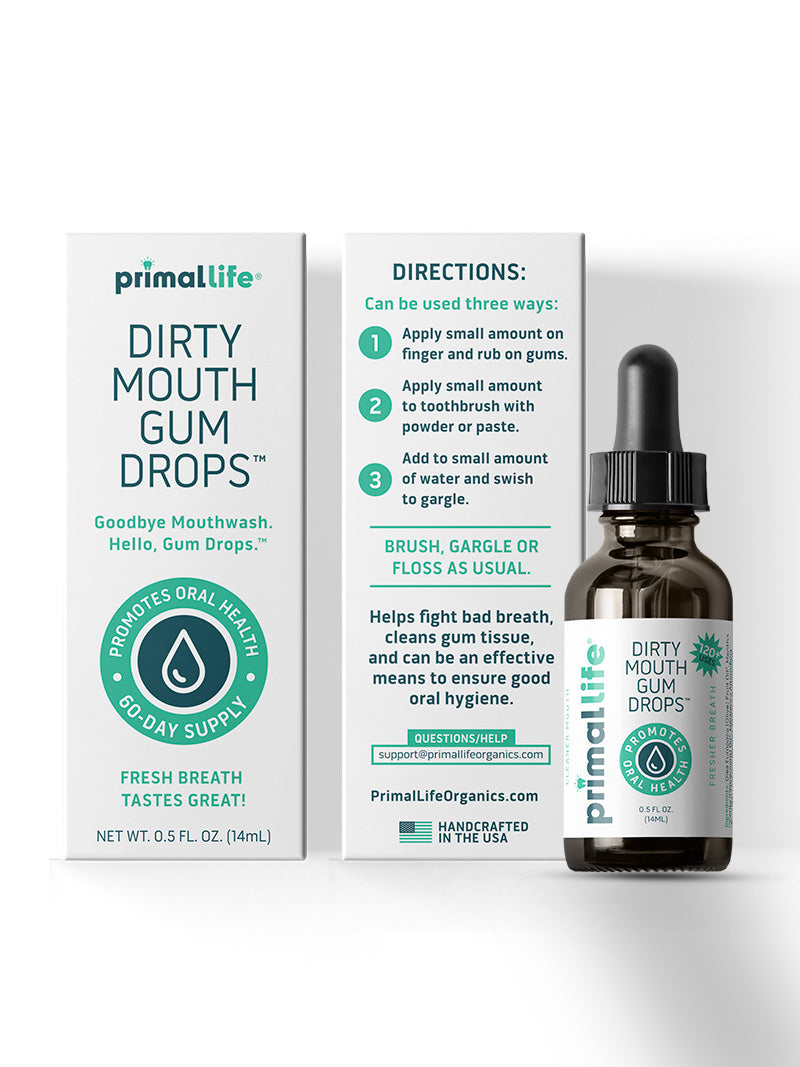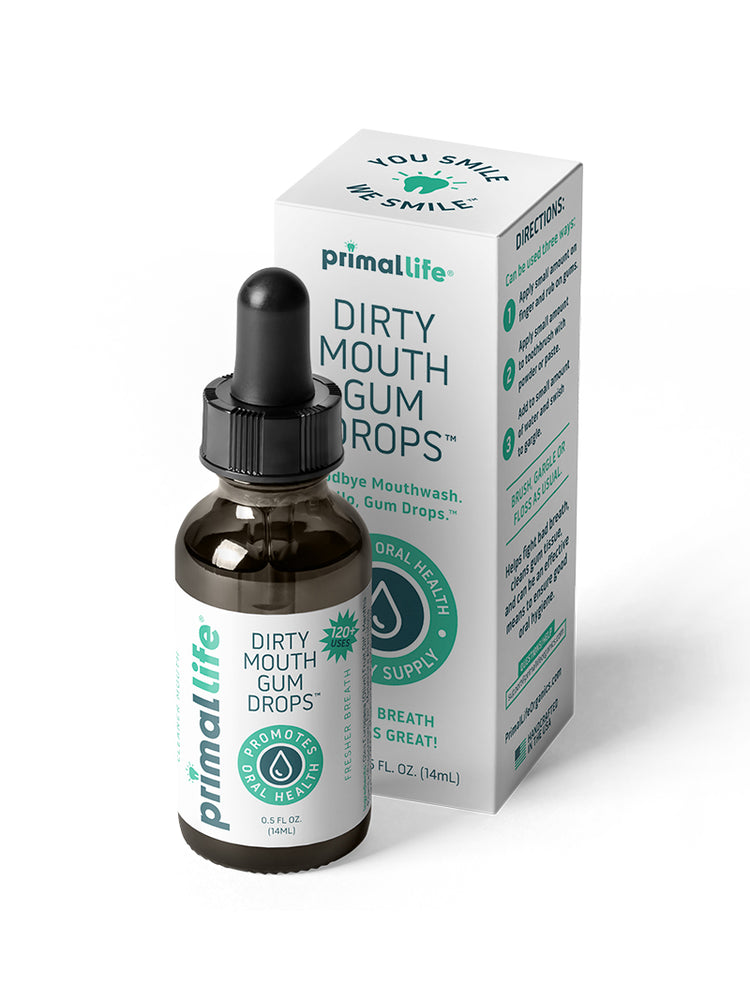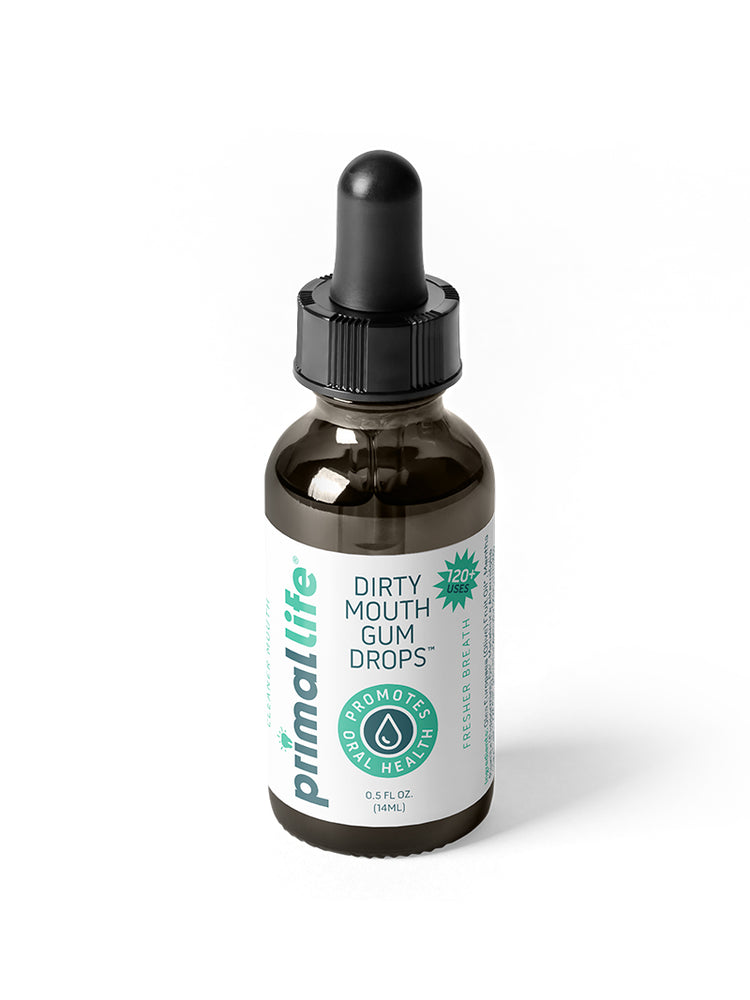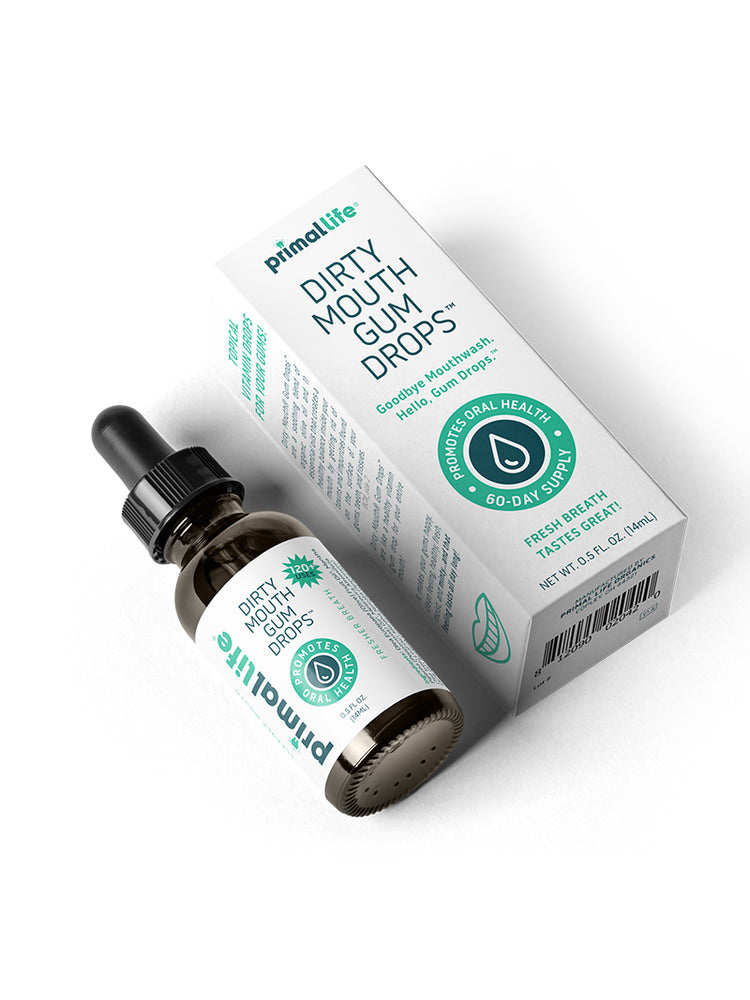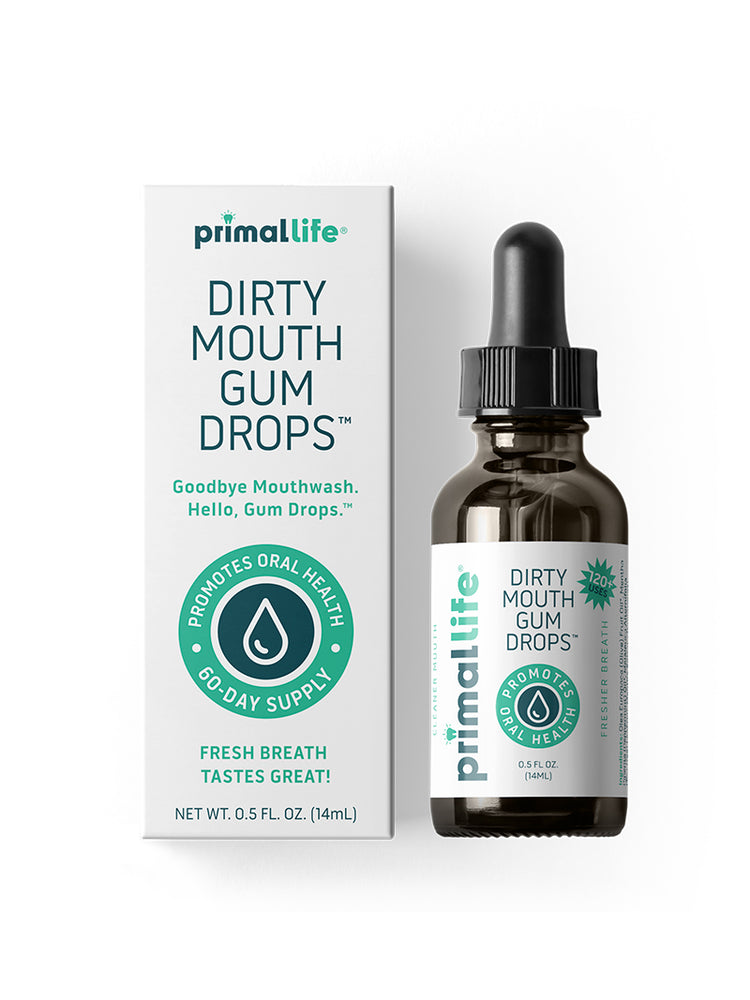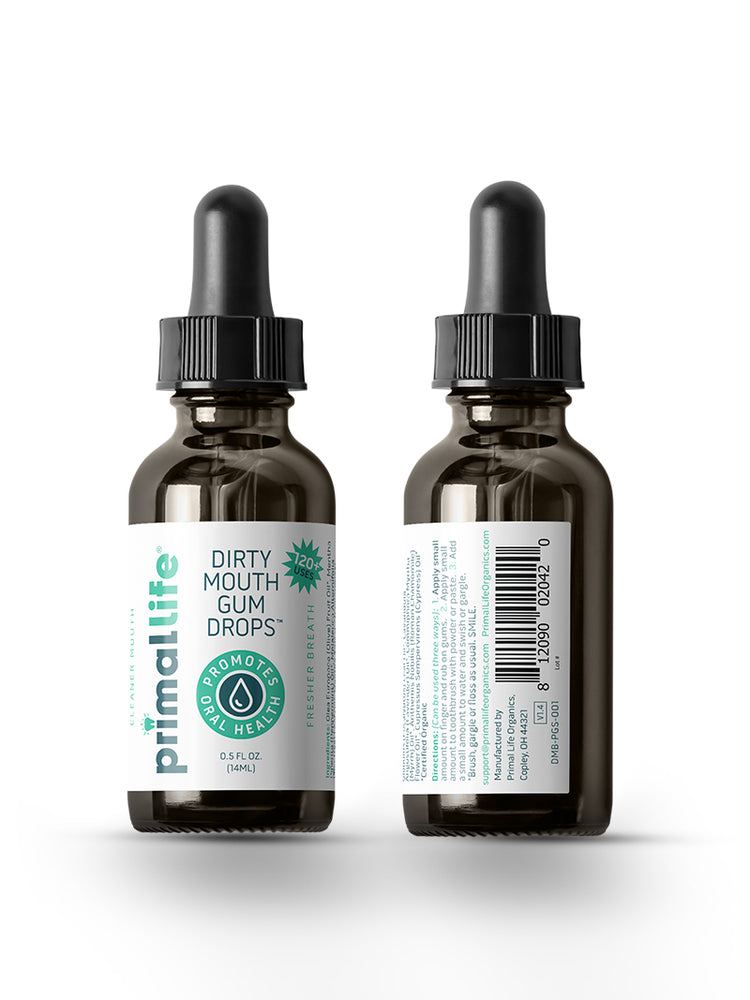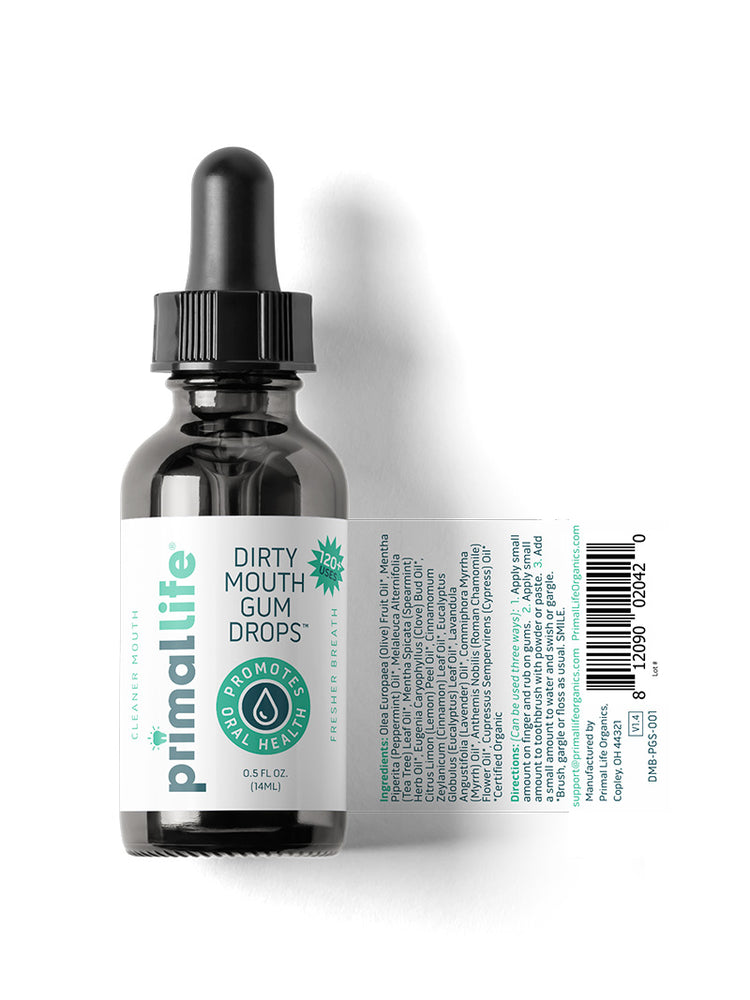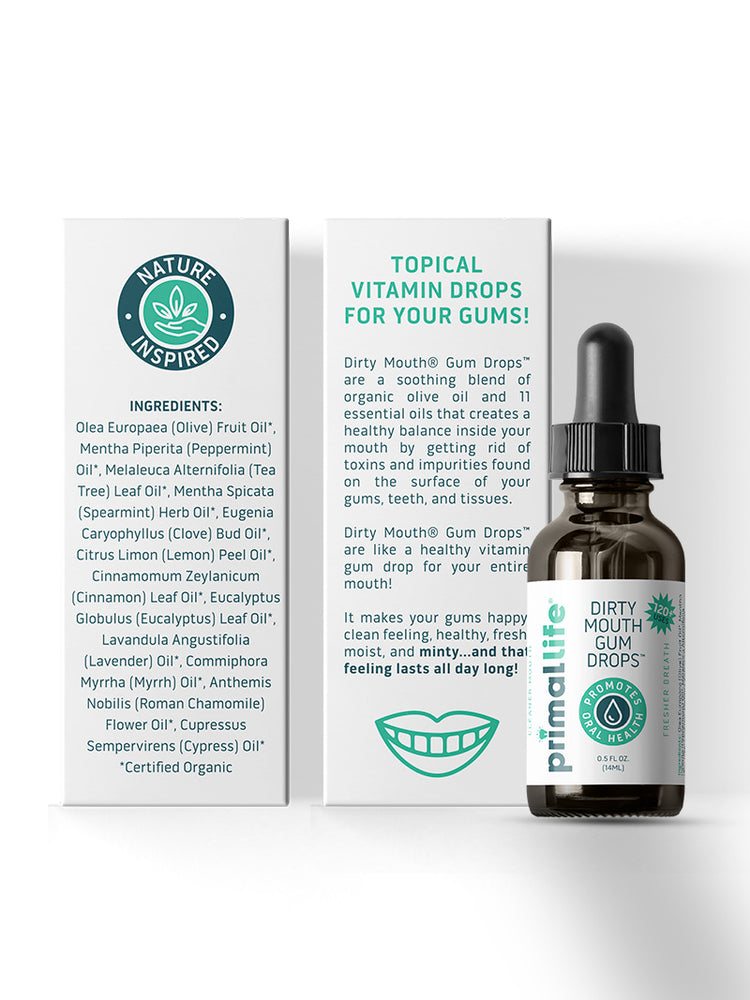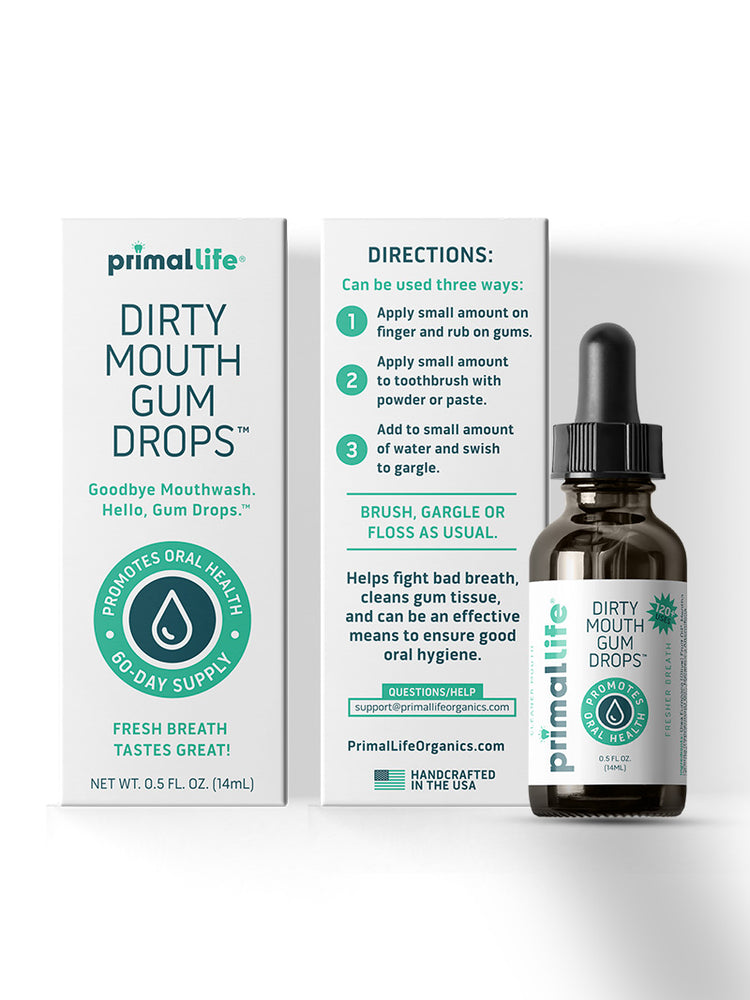The Neurotoxin Lurking in Medicine Cabinets Around the Globe
This article was updated on 2/1/2024.
Do you know what’s sitting inside your medicine cabinet?
I don’t mean lotion, toothpaste, or acne cream – what’s really lurking above your sink?
I’ll tell you: Neurotoxins. Poisonous substances like fluoride that are notorious for wreaking havoc inside your body.
The question is... what are neurotoxins doing in your medicine cabinet?
You probably consider yourself a pretty healthy person. You try to eat well and take care of your body, so you don’t expect to find poisons hiding in the items you use every single day.
Unfortunately, the truth is some of our favorite and most common self-care products are completely saturated with neurotoxins. These destructive toxins put us (and our children!) at risk of everything from thyroid disease to cancer.
You deserve to protect your oral health without poisoning yourself – I'm here to show you how!
What Is a Neurotoxin?
Toxins exist in many different forms, but at their core they’re all the same: powerful and dangerous molecules that help bacteria target healthy tissues and cells in the body. Neurotoxins, in particular, make your brain cells more vulnerable to damage and degeneration.
Regardless of whether they are natural or man-made, all neurotoxins alter the activity of your nervous system and ultimately disrupt and kill essential nerves. Without healthy nerves to transmit and process information in the brain, your body struggles to function.
This doesn’t mean that a single x-ray exam at your dentist will leave you paralyzed overnight, but it does mean that the slow and steady accumulation of neurotoxins in your body poses a significant danger to your health.
Where Do Neurotoxins Come From?
Unfortunately, it’s not hard to come in contact with neurotoxins. Nearly all of the items we use on a daily basis are tainted with harmful neurotoxins:
- Home and cleaning products
- Insecticides and pesticides
- Cosmetic products
- Certain foods and food additives
- Heavy metals like mercury and lead
- Drug therapies
- Chemotherapy and radiation
You may already be familiar with some neurotoxins like the mercury found in seafood or the lead hiding in old pipes and paint, but there’s one neurotoxin that sneaks into your body system more than any other: fluoride.
In fact, fluoride enters the body through sources like water and toothpaste that we’ve been taught to trust and use without hesitation.
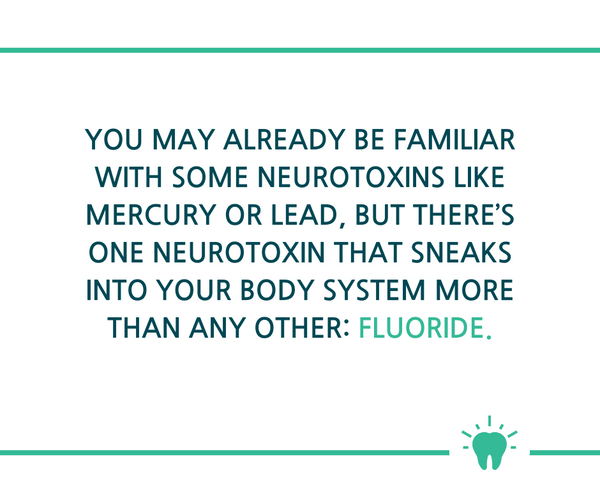
Is Fluoride Bad For You? What Exactly Is It?
What exactly is fluoride, anyway? It’s a trace mineral that comes from fluorine, the world’s 13th most abundant element. This means fluoride exists naturally in the air, soil, and water and it already enters your body naturally.
You're probably familiar with fluoride because it's included on the label of so many toothpaste products. Seemingly credible brands like Colgate and Crest tout fluoride as a perk, so you might be confused. I'm here telling you that fluoride is a neurotoxin, but established dental product companies are promising that fluoride is a magic cure.
It's enough to make anyone wonder! Is fluoride bad for you? Is fluoride bad for your teeth? And just how much fluoride is too much?
What Does Fluoride Do To Your Body?
Here's the core question at the center of the fluoride debate: why is fluoride bad for you?
As soon as fluoride enters your body, it begins to interfere with your natural biochemistry in fundamental ways. Not only does fluoride block important enzymes, but it also works with aluminum to prevent signals between growth factors, hormones, and neurotransmitters. This ultimately makes fluoride an endocrine disruptor that can harm everything from your bones and brain to thyroid gland.
Since a healthy adult kidney can only excrete a portion of the fluoride ingested each day, all remaining fluoride accumulates into calcified tissues in the bones and pineal glands. This is bad news for anybody, but children are particularly vulnerable to the complications of fluoride since their kidneys can't effectively filter and excrete fluoride.
Bottle-fed babies are the most vulnerable to dangerously high levels of fluoride. Unless parents use fluoride-free water, their babies ingest fluoride with every bottle of formula. When compared to all other children and adults, bottle-fed babies receive the highest doses of fluoride by body weight.
More than anything else, as a neurotoxin, fluoride presents unique threats to your brain, spinal cord, and overall nervous system.

The Story of Fluoride And Public Health
The story of fluoride began in 1901 with Colorado-based dentist Dr. Frederick McKay, who noticed that his patients’ teeth, though marked by unsightly permanent brown stains, were less vulnerable to cavities. After a few other dentists around the country made the same observations, they identified the root cause as drinking water with high levels of fluoride.
Eager to see if it could reduce the rate of cavities across an entire population, health officials actually began to pursue the idea of adding fluoride into community water supplies. They didn’t want to add enough fluoride to cause the permanent staining and enamel damage that Dr. McKay had noticed in Colorado, but just enough to infuse drinking water with what they believed to be fluoride’s protective anti-cavity properties.
Public health officials who gathered data from the cities involved in the earliest fluoridation initiatives believed they could prove a direct correlation between fluoridated water and reduction in dental caries. Of course, this immediately created a wild rush as cities across the country sought to add this “magical” fluoride to municipal water systems.
Fast forward more than 50 years later.
We know this practice today as “community water fluoridation.” It has caused major controversy over the years, but aside from activists and medical professionals, few adults even question the presence of fluoride in their water. After all, community water fluoridation has been a core component of public policy since the 1950s.
With 75% of the American water supply fluoridated and 99% of major toothpaste brands boasting fluoride content, it’s no wonder that most Americans shrug and accept it as the norm. We’re made to believe that constantly exposing our bodies to fluoride gives us the best chance of lasting health.
In other words, our government is saying, "Hey! Try this neurotoxin in your water! Add it to your toothpaste! It's super!"
Don’t you think it’s time to re-evaluate the status quo?
Is Fluoride a Neurotoxin?
Even if the U.S Center For Disease control still believes fluoridation of water and toothpaste is one of the best public health achievements of the 20th century, other major organizations disagree. The World Health Organization, the global delegation that directs and coordinates international health within the United Nations, recognizes fluoride as a dangerous neurotoxin within the same ranks as arsenic and selenium.
The National Academies of Science, Engineering, and Medicine (NAP) also performed a comprehensive review of fluoride in 2006. Through more than 500 pages of analysis, the NAP documented fluoride’s neurotoxicity and neurobehavioral effects.
Specifically, the NAP noted that fluoride affects the behavior of neurotransmitters in the brain, ultimately providing false messages throughout the nervous system and reducing energy essential to brain function. Even worse, fluoride increases the production of free radicals in the brain. These free radicals accelerate degeneration of healthy tissues, disrupt essential brain activities, and trigger the development of disease.
Through all of this research, there’s no doubt that fluoride is a dangerous neurotoxin.
Yet we continue to drink fluoridated water and use fluoride toothpaste, and as a result many of us experience the consequences of the following dangers of fluoride.
10 Fluoride Dangers You Probably Aren't Aware Of
With government agencies still somehow insisting on the benefits of fluoride and supporting community water fluoridation (or should I say, community water poisoning), you may not know the true dangers that fluoride presents to your brain and overall health.
The following nine fluoride dangers will open your eyes to the truly toxic nature of fluoride in the human body.
Affects the Brain During Pregnancy and Early Childhood
In addition to posing a threat to adults, fluoride also has a negative effect on unborn and newborn babies. Developing babies are extremely vulnerable to industrial chemicals like fluoride, and the placenta can’t block environmental toxins from entering fetal circulation.
Even after a baby is born, the blood-brain barrier only shields a fraction of the chemicals entering a baby’s body. This is especially dangerous for bottle-fed babies. Breast milk contains very low levels of fluoride, around 0.004 ppm, but bottle-fed babies who drink formula blended with fluoridated water are exposed to up to 1.2ppm of fluoride.
These neurotoxins don’t just enter the brain tissue and then hop right out. They dig in and cause serious cognitive problems. Research indicates that developmental neurotoxins like fluoride are linked to conditions like autism, ADHD, and other cognitive impairments.

Lowers IQ In Children
It wasn’t until 2017 that the U.S government finally funded a study of fluoride and its effects on neurological development, but the results were clear: fluoride exposure in women during pregnancy is associated with lower IQ in children as they get older.
In fact, more than 50 studies demonstrate this same trend. IQ examinations of 15,000 children exhibit evidence that as fluoride exposure increases, IQ scores decrease.
Facilitates Entry of Aluminum In the Brain
Fluoride is dangerous enough on its own, but it causes a double whammy by making entry of aluminum into the brain even easier. Aluminum, another known neurotoxin, is a beast of its own. It lurks in common products like deodorants and antiperspirants and is known to cause Alzheimer’s disease and other forms of dementia.
Under optimal conditions, the body’s blood-brain barrier is designed to keep toxins like fluoride and aluminum out of the brain. However, we all know that this system isn’t perfect. When fluoride and aluminum meet, fluoride bonds with aluminum to increase its absorption. This is a dangerous pattern for older adults who are most vulnerable to Alzheimer’s.
Increases Risk of Thyroid Problems
Your thyroid is a butterfly-shaped gland situated at the base of the neck. Even though you can’t see it or feel it, your thyroid plays a critical role in your overall health by producing and releasing the hormones your body needs to perform essential functions.
The thyroid uses iodine - found in table salt, seafood, bread, and milk - as its source of fuel. When your thyroid is functioning as it should, iodine is extracted for synthesis into thyroid hormones that influence heart beat, digestion, brain development, body temperature, blood sugar, mood, and so much more!
Unfortunately, but not surprisingly, the presence of fluoride in the body is associated with interruption of thyroid function. Studies show that fluoride impacts levels of thyroid hormone, even when the concentration of fluoride is less than 0.5 mg/L.
A poorly functioning thyroid leads to an imbalance condition known as hyperthyroidism, which in turn triggers consequences for the brain like loss of concentration, depression, anxiety, memory loss, and other cognitive and mental health issues.
Causes Nervous System Degeneration
Blood vessels sustain life by running throughout your body to deliver oxygen and nutrients to all tissues and organs. The blood vessels that nourish the central nervous system are known as the blood-brain barrier because they have the power to control all molecules that travel from the blood to the brain and back.
A properly functioning blood-brain barrier shields the brain from neurotoxins, but unfortunately the barrier is vulnerable to damage and failure. Fluoride takes any opportunity it can to sneak through the blood-brain barrier and trigger degeneration in the brain. In particular, research links fluoride to damage in the hippocampus, neocortex, and cerebellum.
These areas of the brain are responsible for essential tasks like memory, learning, emotional regulation, stress response, sensory perception, language skills, and coordination. If fluoride triggers even fractional damage in even one of these areas of the brain, it can severely diminish your quality of life.
Impairs Pineal Gland Function
The pineal gland, a small, pea-shaped gland in the brain, is responsible producing and regulating hormones like melatonin. Aside from supporting a healthy sleep cycle, melatonin also uses its antioxidant properties to protect the brain from damage.
However, the pineal gland is prone to accumulating large deposits of minerals like fluoride. Advanced calcification in the pineal gland is known to stunt melatonin production and put you at risk of melatonin deficiency. Without enough melatonin, you may suffer symptoms like poor sleep, depression, anxiety, and accelerated brain aging.
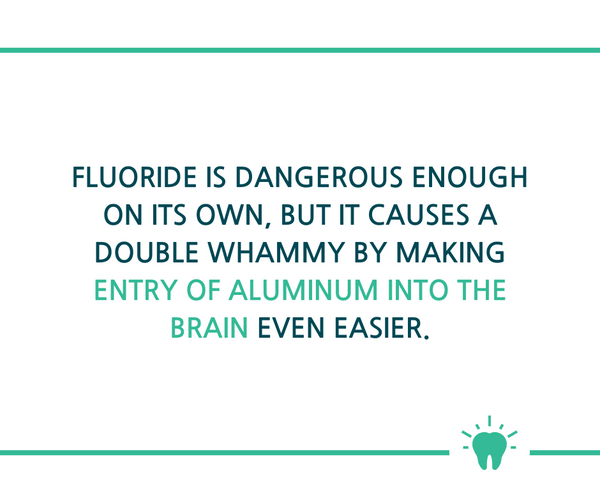
Decreases Men’s And Women’s Testosterone
Since 1999, men’s testosterone levels have been on a downward spiral. Recent studies have spotlighted the potential ramifications of fluoride exposure on this important hormone.
- Abnormal Sex Hormone Levels: High fluoride exposure is linked to abnormal sex hormone levels, affecting estrogen and testosterone. This disruption in hormonal balance can have cascading effects on various aspects of male health, influencing everything from mood and energy to libido and overall well-being.
- Fertility Challenges in Men: Excess fluoride induces changes in sperm structure and functions in males, diminishing fertility. This impact on sperm quality and function raises concerns about reproductive health in men.
The impact extends to women, with fluoride implicated in hormonal imbalances affecting estrogen and testosterone. These disruptions, essential for various fertility functions, can have far-reaching consequences. From impacting menstrual regulation to fertility cycles, the interference of fluoride in sex hormone levels raises concerns about reproductive well-being.
Latches On to Lead From Pipes and Faucets
As if fluoride wasn’t awful enough on its own, it effortlessly leaches lead from old pipes and chrome faucets as it streams through on the way to your ice maker or water bottle. Lead has been banned from paint since 978 and outlawed in the manufacture of water pipes since 1986, but that doesn’t mean it has magically disappeared.
Fluoridated water latches on to lead remnants in old pipes and ultimately creates a perfect storm of invisible neurotoxins that threaten your health and wellness. There’s no denying the severe health consequences of lead on the human body, with lead poisoning symptoms including poor brain function, mood disorders, infertility, learning difficulties, and developmental delays.
Increases Rate of ADHD
Attention-deficit hyperactivity disorder (ADHD) is a common neurodevelopmental disorder defined by a child’s inattention, impulsive behavior, and hyperactivity. More than 10% of children in the United States are diagnosed with ADHD, and many of them maintain their diagnosis into adulthood.
New research now draws a direct link between fluoride and ADHD. In particular, high prenatal exposure to fluoride increases the incidence of ADHD in children. This is because fluoride easily crosses the placenta, accumulates in the infant brain, and creates neurotoxic effects. Any of the adverse effects triggered by prenatal fluoride can impair infant neurobehavioral development and increase the odds of ADHD.
Triggers Depression
Just in case everything I’ve listed above wasn’t enough to prove the extreme dangers of fluoride, this neurotoxin is also known to cause depression.
Actually, it’s known to cause depression but is also added into antidepressants. That’s a strange contradiction that defies all logic.
Yet name brand antidepressants like Paxil, Zoloft, and Lexapro all contain fluoride, despite the research connecting high fluoride exposure and emotional regulation and stress response challenges.
How to Avoid Fluoride: Easy Tips and Tricks
By now you’re wondering how it’s even remotely possible that a mineral directly linked to such extreme health problems is actively added into our water and toothpaste supplies - but it is.
And because the government isn’t intervening, you’re the only person with the power to reduce your fluoride exposure. Here's how to avoid fluoride during your everyday routine.

Use Fluoride-Reducing Water Filters
If we pull back the curtain and expose the real process that delivers fluoride into your drinking water, I guarantee you’ll be running to the store for fluoride filters without even taking the time to put on your shoes.
Are you ready for this?
In places like central Florida, where enormous phosphate deposits are mined to make synthetic fertilizer, highly toxic substances like hydrogen fluoride and silicon tetrafluoride accumulate as the resulting byproducts.
Manufacturers use specialized technologies to convert these toxic vapors into fluorosilicic acid (FSA), but don’t be fooled into thinking that FSA is any type of improvement on the original toxic substances. FSA is just as dangerous, but it’s a more containable type of waste that manufacturers can actually store and transport.
Considering that the U.S National Institute for Occupational Safety and Health (OSHA) states that FSA can cause dire health complications when inhaled or touched, you’d think that giant storage tanks of FSA should be kept as far away from humans as possible. Your line of thinking is logical, but apparently our government disagrees.
Instead of immediately disposing of FSA, our government instead adds it into public drinking water to achieve fluoridation.
Yes, that’s right, that toxic industrial waste is drip fed into public drinking water. In fact, it’s a dirty little secret that the use of FSA is the only reason country-wide water fluoridation is even affordable. Without it, community water fluoridation would be too cost prohibitive to implement.
How to Remove Fluoride From Water
If you’re serious about removing fluoride from your drinking water, you have to be strategic and think out of the box. Normal carbon filters - like those sold by Brita - If you’re serious about learning how to remove fluoride from your drinking water, you have to be strategic and think out of the box. Normal carbon filters- like those sold by Brita- only filter trace amounts of fluoride out of drinking water. Boiling water doesn’t help either.
Your only real option is to purchase a filter purposefully designed to remove all fluoride from water.
Make sure the filter that you purchase explicitly states its ability to remove fluoride. Ideally, you can find a filter that uses gravity-fed micro-porous filtration to remove pathogens, volatile organic compounds, heavy metals, arsenic, fluoride, and other neurotoxins.
Use a Non-Fluoride Toothpaste
Crest became the first toothpaste with fluoride in the 1950s, and since then it has become standard practice to infuse toothpaste products with fluoride. Of course, these toxic fluoride toothpastes are marketed to children with popular characters like princesses, Minions, and action figures.
How Much Fluoride Is Too Much?
Fluoride dangers shouldn't be taken lightly. If you care about your overall health and quality of life, any amount of fluoride is too much. Toothpaste with fluoride is so dangerous that it shouldn't even be swallowed by the children the toothpaste tubes are designed to attract.
Don't believe me? Directions on every toothpaste bottle read, “Keep out of reach of children under six years of age. If more than used for brushing is accidentally swallowed, get medical help or a contact poison control center right away.”
As if a four year old isn’t going to grab the bubblegum-flavored Minions bottle and take a taste? Or a three year old is going to ask permission to use it?
The last thing we want to do is put alluring and tempting fluoride products in front of our children. They shouldn't be using the “pea-sized” amount of fluoride toothpaste recommended by most dentists - they should be using zero of anything other than fluoride-free toothpaste.
A Fluoride-Free Toothpaste That Works
Not sure how to avoid fluoride in your toothpaste easily? Lucky for you, more people are starting to question the logic of using fluoride in toothpaste at all, which has led to the availability of terrific fluoride-free alternatives.
Parents want better toothpaste options for their kids, and adults want better options for themselves! But which natural toothpaste is the right choice to improve your oral health?
How about a revolutionary toothpowder or toothpaste that takes the conventional toothpaste formula and sets it on its ear by utilizing earthen clay to produce a powerful teeth cleansing product? Our Dirty Mouth® Toothpowder, Toothpaste, and Toothpaste Chews help your teeth feel cleaner, stronger, and look whiter.
How? This clay-based formula infuses your mouth with the vital and trace minerals minerals most important to your dental health. Our premium formula helps cleanse the tissues from things like oils, toxins, and impurities found on the surface of your mouth. Just use a pinch of Dirty Mouth® Toothpowder or Toothpaste on your toothbrush and brush for two minutes as usual.
Even better, we use nano-hydroxyapatite - the same mineral your teeth are made of - to remineralize your teeth so they are strong and cavity-free!
You won’t just see this difference, you will feel it in your body as you liberate yourself from neurotoxins like fluoride and legitimately improve your health.
Detoxing From Fluoride
To ensure your mouth is free from fluoride, we recommend you start with a dental detox.
Our Dental Detox Kit has everything you need to detox your mouth from this dangerous neurotoxin. Complete with two Dirty Mouth Toothpowders, Gum Drops - made of a detoxifying and soothing blend of 11 essential oils that creates a healthy balance of good bacteria inside your mouth, a Copper Tongue Scraper, Bamboo-Charcoal Dental Picks, and a Bamboo Toothbrush, you will be able to detoxify your mouth in a few short weeks!
The Bottom Line
Now you can see exactly how fluoride disrupts the natural processes of your body, makes you vulnerable to serious health complications, and diminishes your overall wellness.
By learning how to remove fluoride from water and selecting fluoride-free toothpaste alternatives, you're taking the most important steps needed to shield your body from this invisible neurotoxin!
Take the proactive step and grab your Dental Detox Kit to free yourself from the dangers of fluoride while creating a healthier and brighter smile
Resources
1. https://jnnp.bmj.com/content/75/suppl_3/iii29.
2. https://www.news-medical.net/health/What-is-Neurotoxicity.aspx.
3. https://www.ncbi.nlm.nih.gov/pmc/articles/PMC3153206/.
4. https://www.ncbi.nlm.nih.gov/pmc/articles/PMC3956646/.
5. https://www.hsph.harvard.edu/magazine/magazine_article/fluoridated-drinking-water/.
6. https://iaomt.org/harvard-study-confirms-fluoride-harms-brain-development/.
7. https://www.cdc.gov/MMWR/preview/mmwrhtml/mm4841a1.htm.
8. http://origins.osu.edu/article/toxic-treatment-fluorides-transformation-industrial-waste-public-health-miracle/page/0/1.
9. https://www.nap.edu/read/11571/chapter/9.
10. https://www.ada.org/en/publications/ada-news/2018-archive/may/studies-reaffirm-safety-of-fluoridation.
11. https://www.osha.gov/.
12. https://www.cdc.gov/grand-rounds/pp/2013/20131217-water-fluoridation.html.
13. https://www.sciencedirect.com/science/article/pii/S0041008X03002515.
14. https://www.ncbi.nlm.nih.gov/pmc/articles/PMC3774444/.
15. https://www.aafp.org/afp/1998/0215/p776.html#sec-4.
16. http://www.elitesd.net/Dementia_Caused_Aluminum.html.
17. https://www.ncbi.nlm.nih.gov/pmc/articles/PMC3056430/.
18. https://www.hsph.harvard.edu/news/features/fluoride-childrens-health-grandjean-choi/.
19. https://www.prnewswire.com/news-releases/new-study-confirms-fluoride-harms-fetal-brain-lowers-iq-300524387.html.
20. https://www.ncbi.nlm.nih.gov/pmc/articles/PMC4292164/.
21. http://static.infowars.com/2011/12/i/general/2011_study-neurodegenerative_changes_from_fluoride_of_brain_spinal_cord_and_sciatic_nerve.pdf.
22. https://www.karger.com/Article/Abstract/47443.
23. https://www.sciencedirect.com/science/article/pii/S0161813X07001404.
24. https://www.who.int/news-room/fact-sheets/detail/lead-poisoning-and-health.
25. https://www.medscape.com/viewarticle/903653.
26. https://www.ncbi.nlm.nih.gov/pmc/articles/PMC4389999/.
27. https://www.ncbi.nlm.nih.gov/pmc/articles/PMC4491063/
28. https://brita.ca/water-filtration-process/frequently-asked-questions/.







